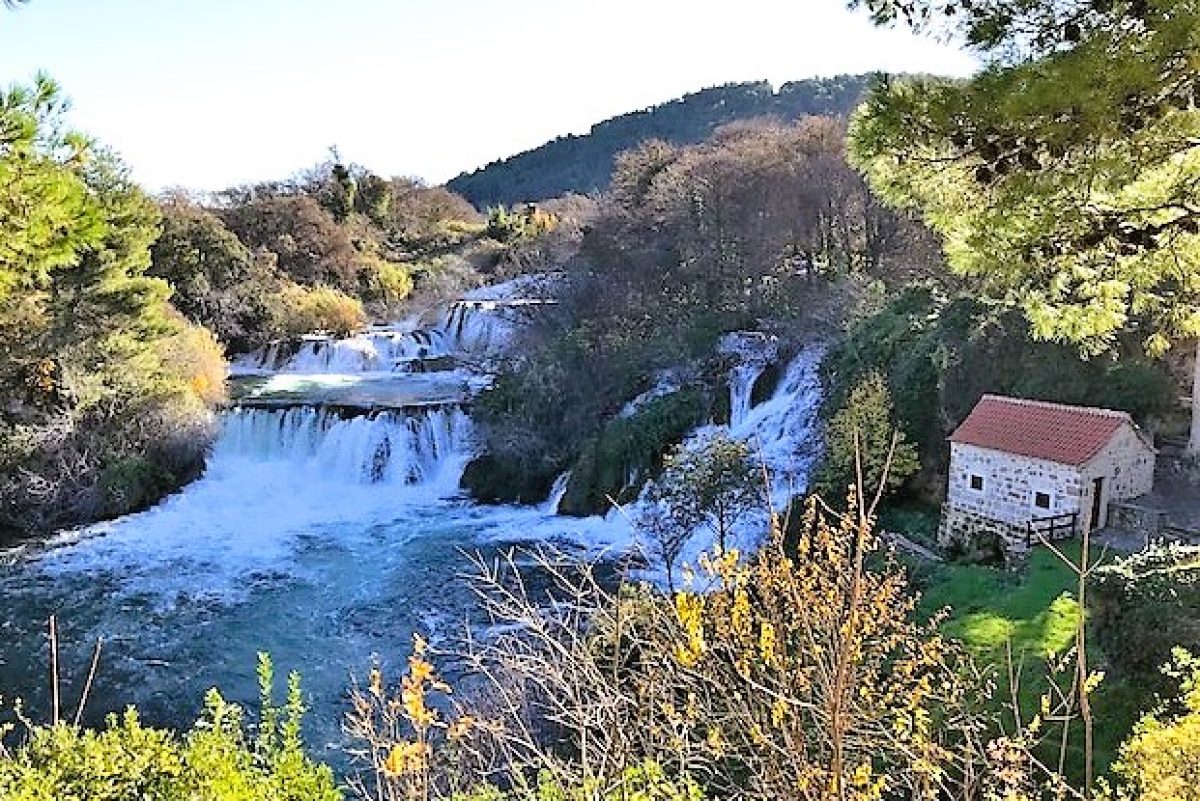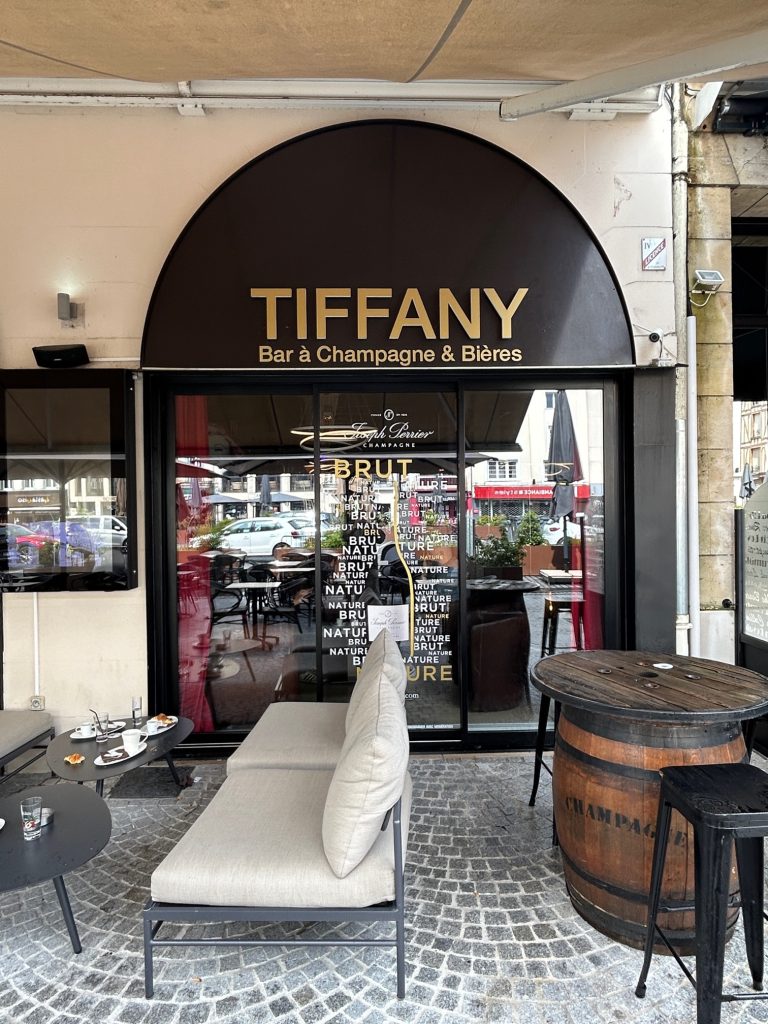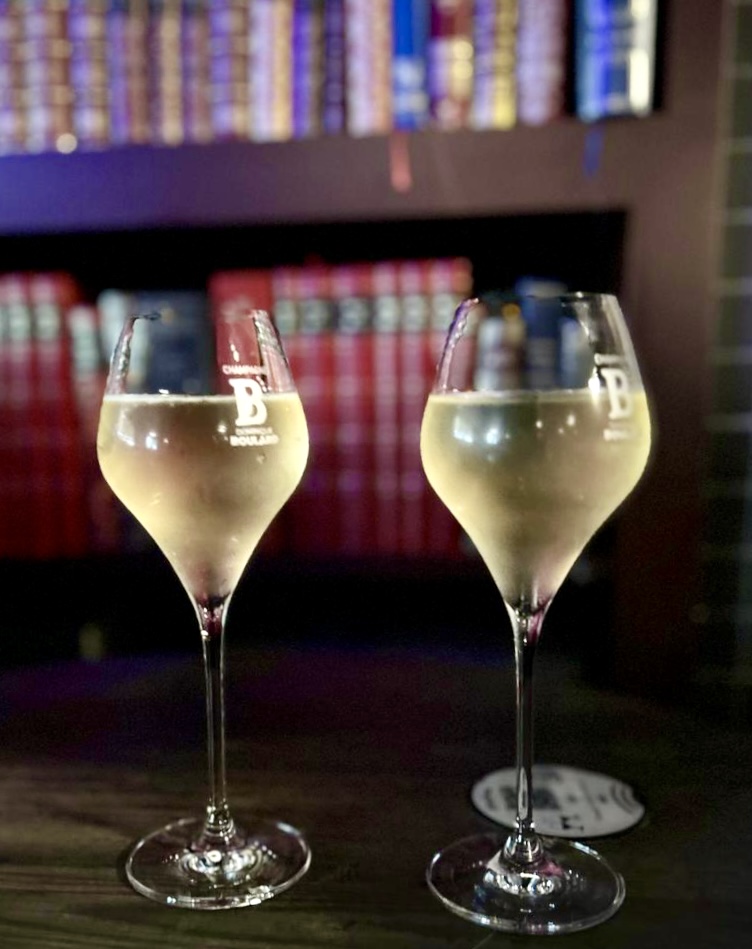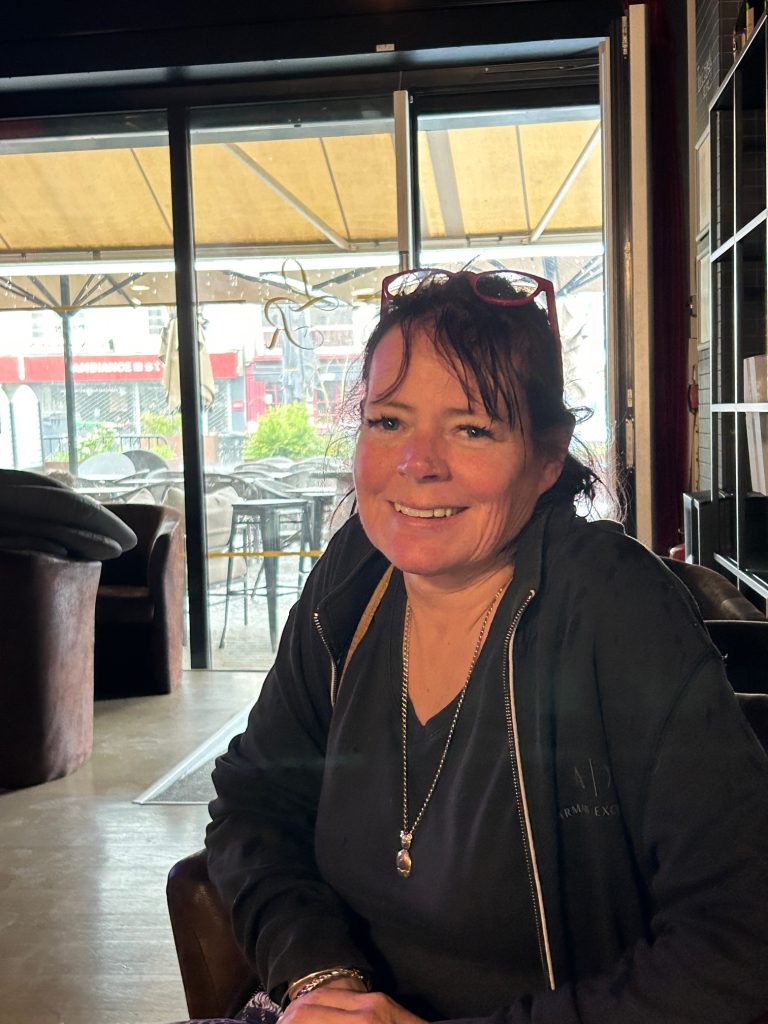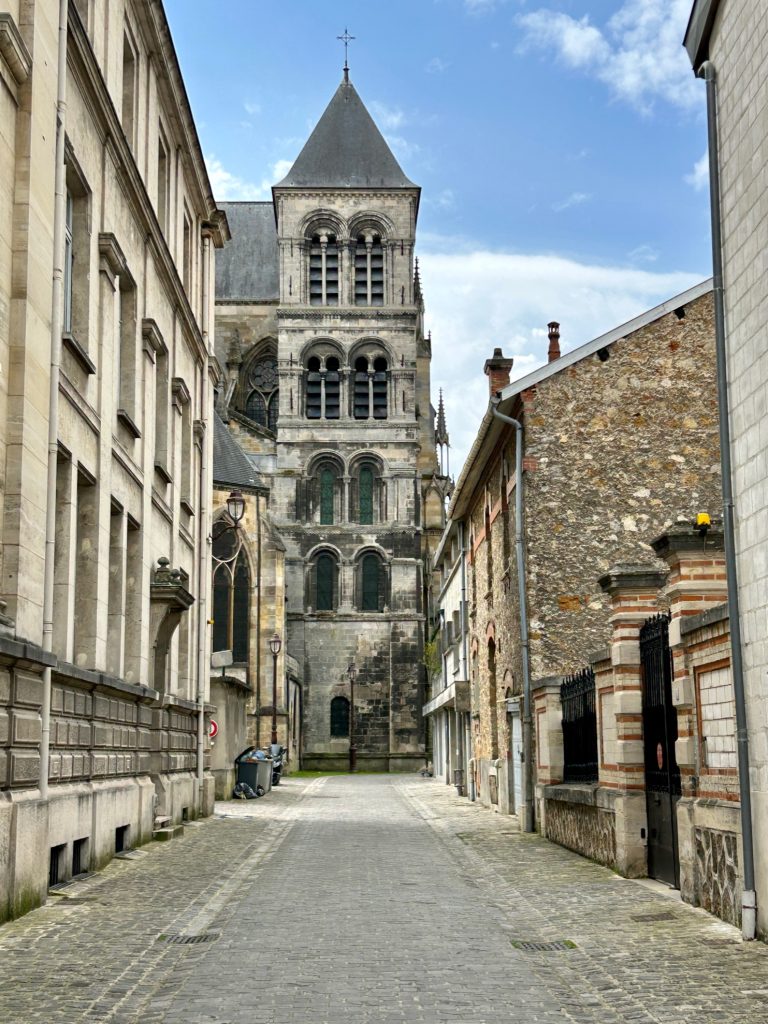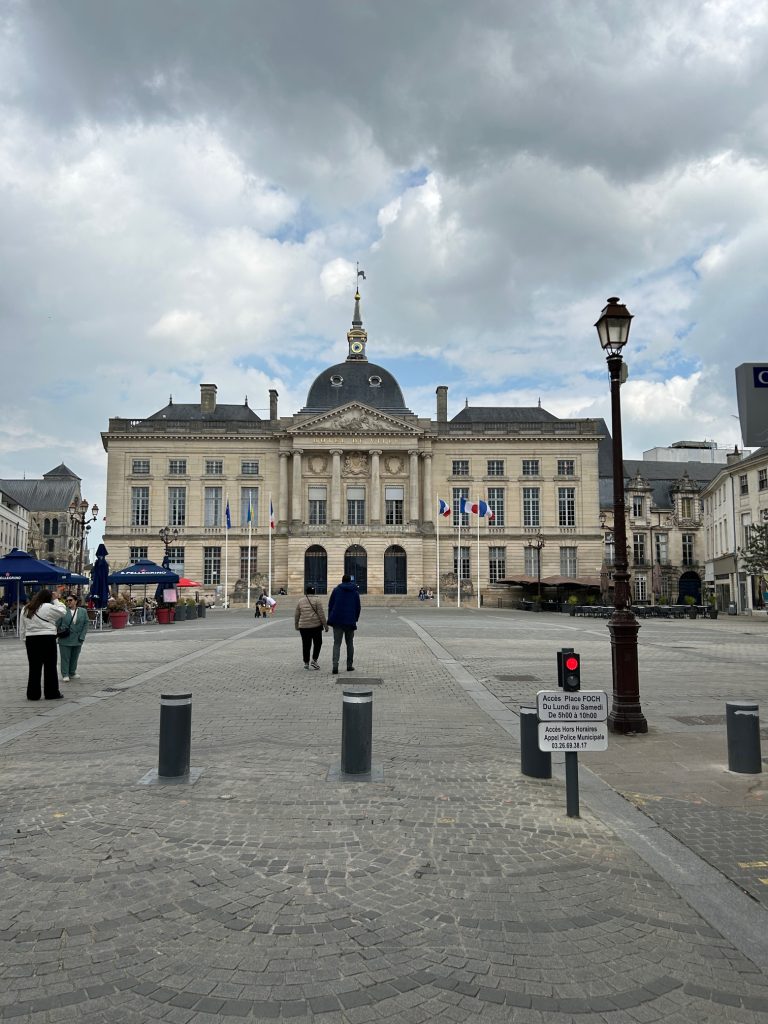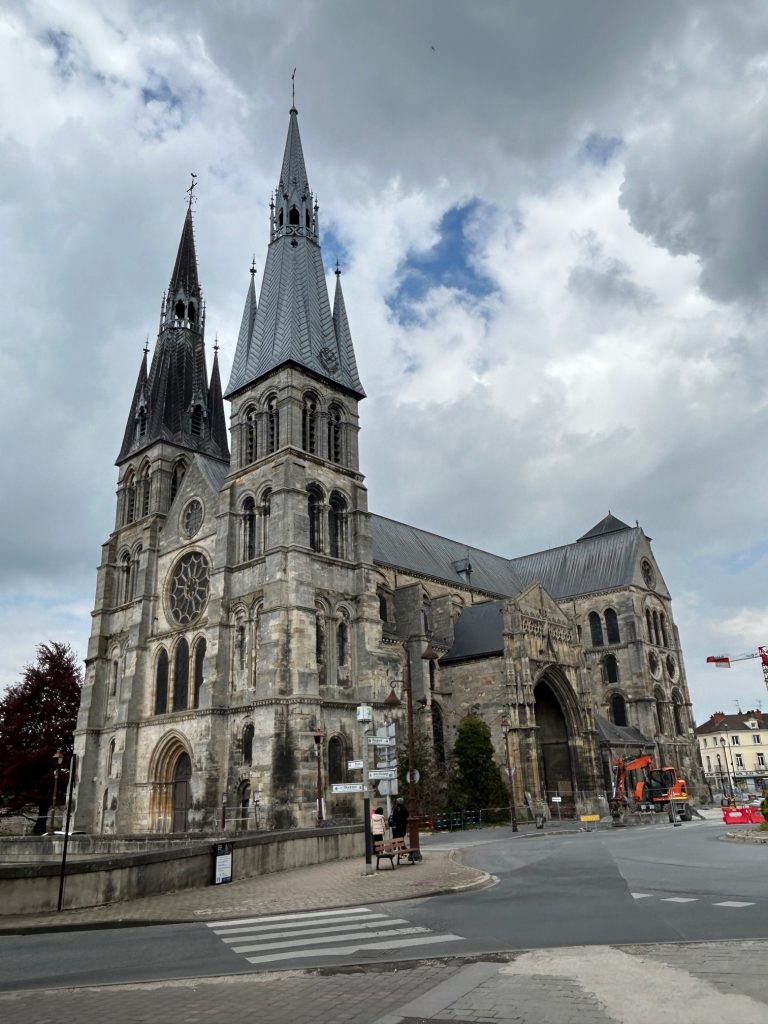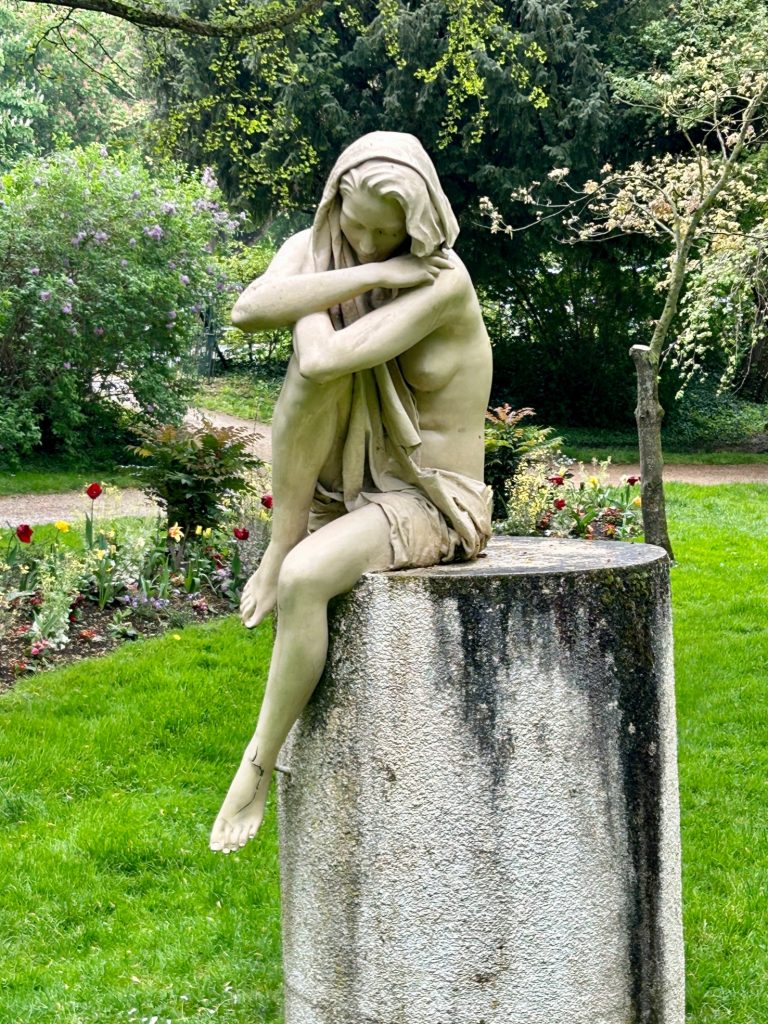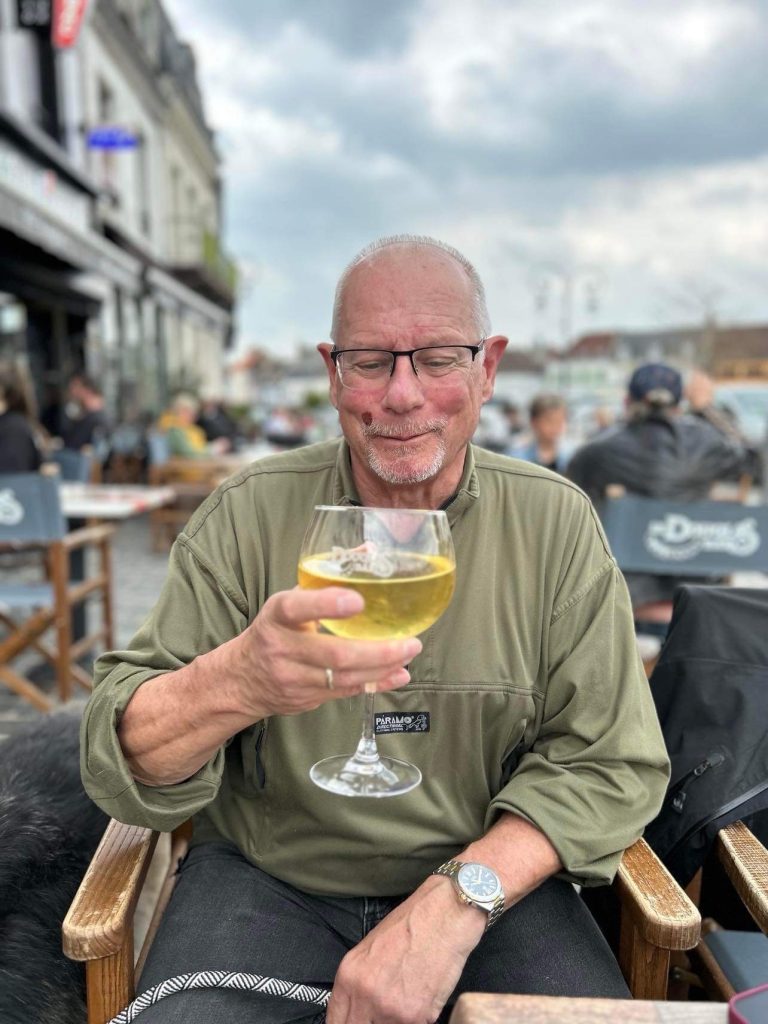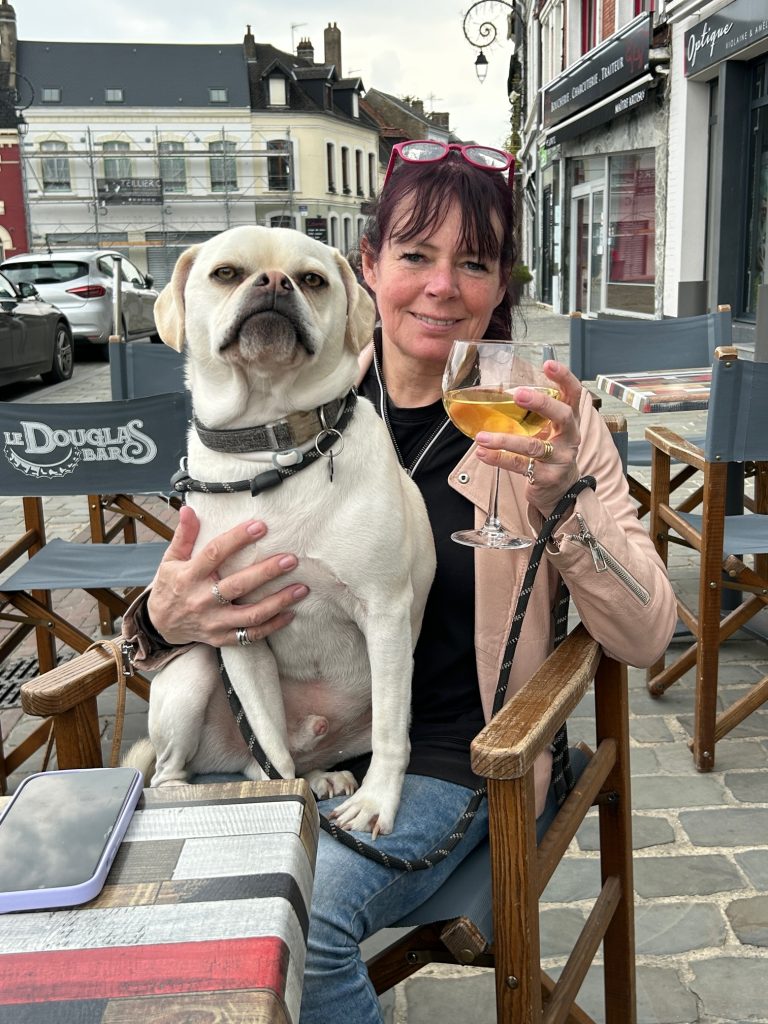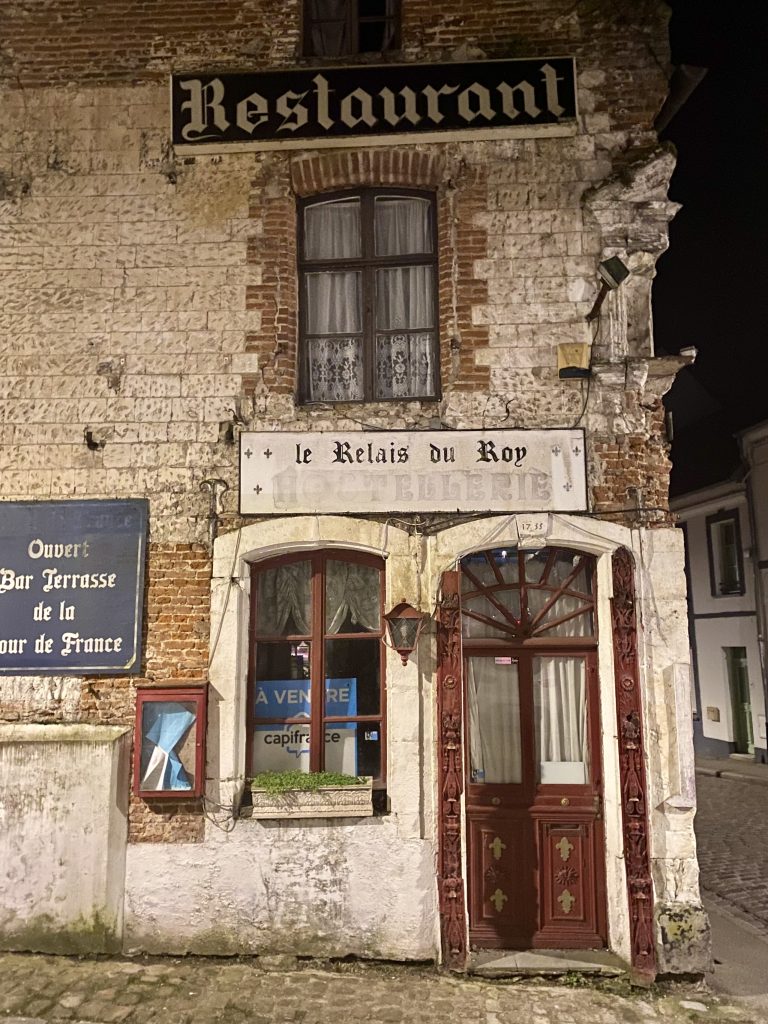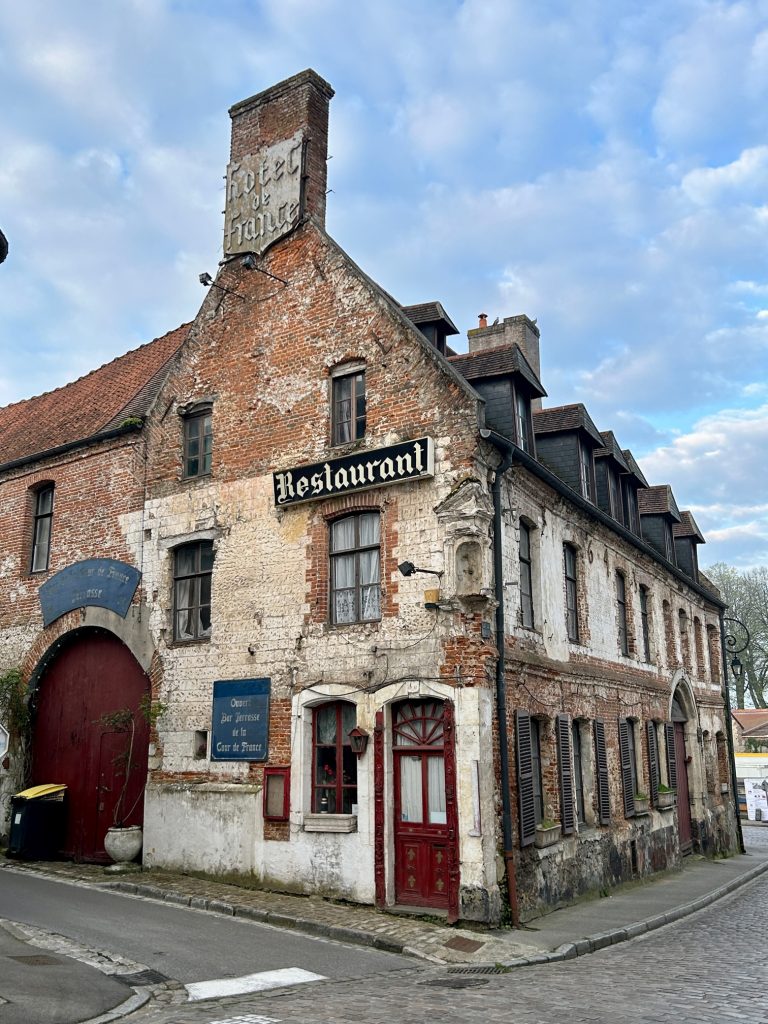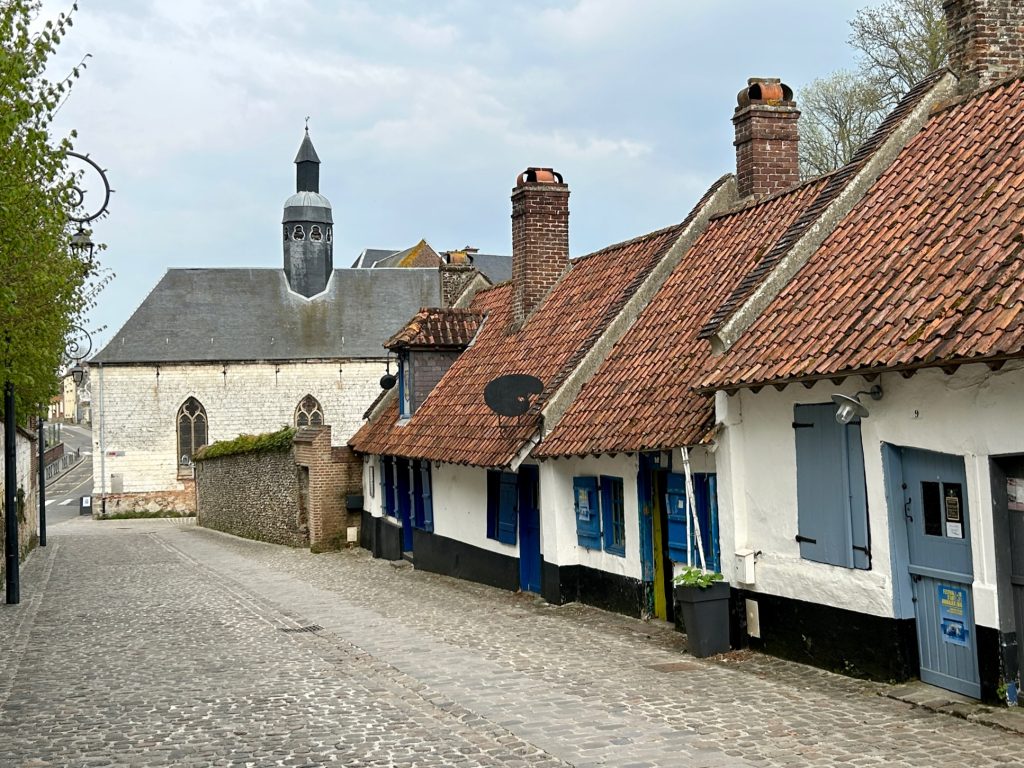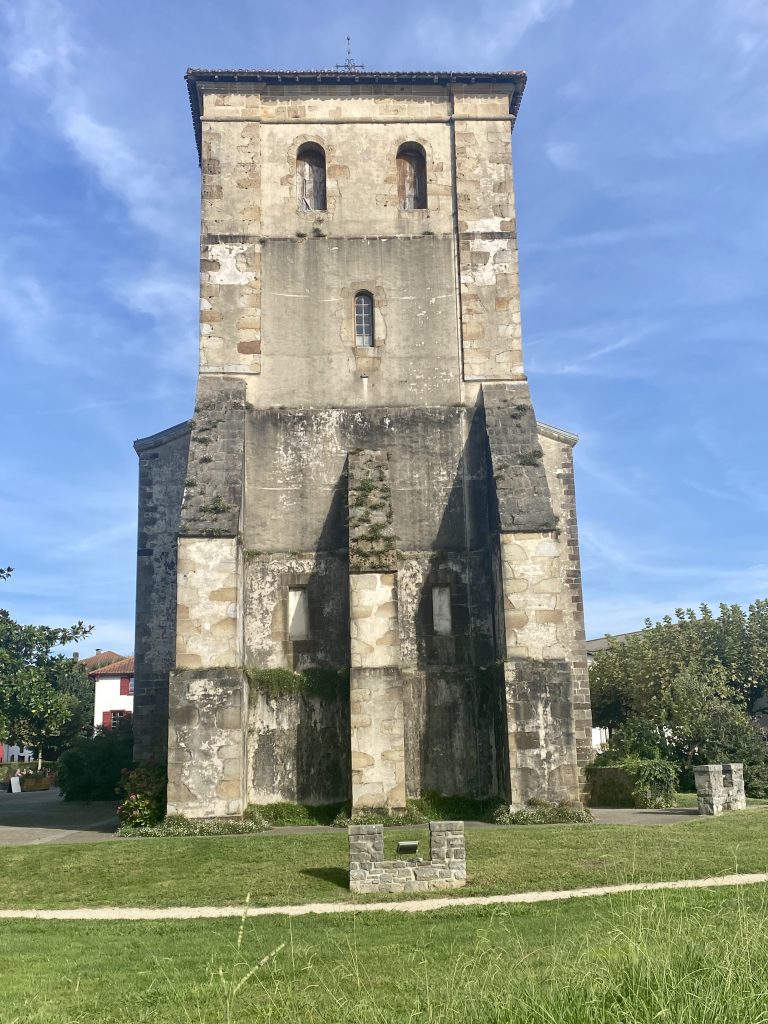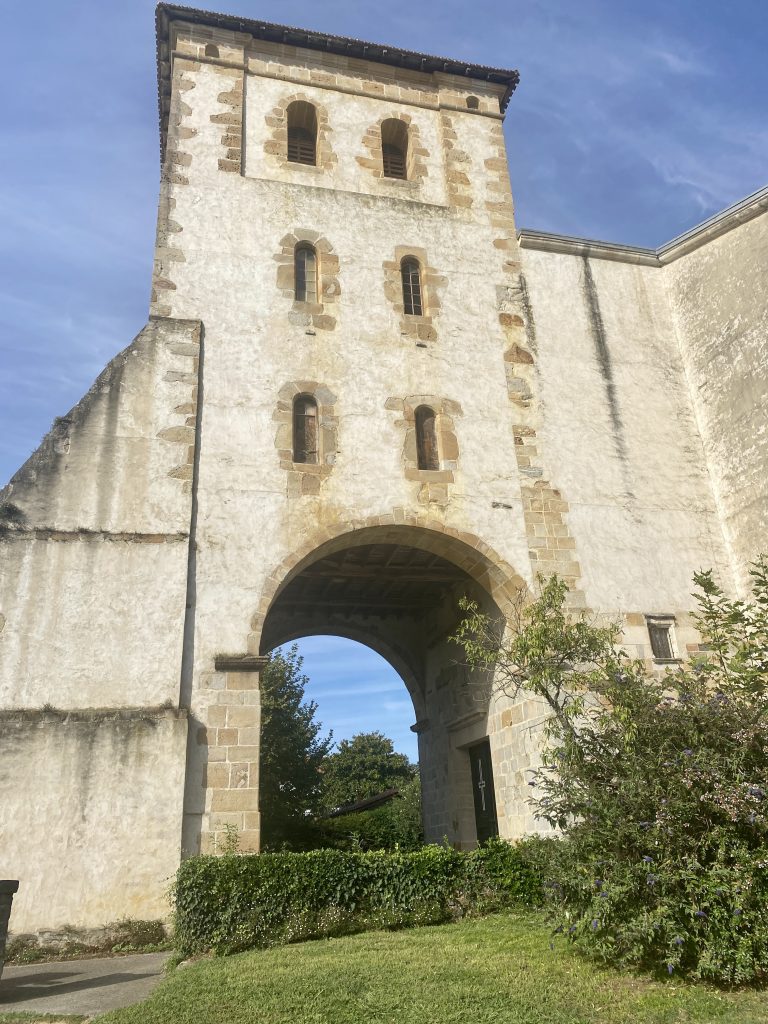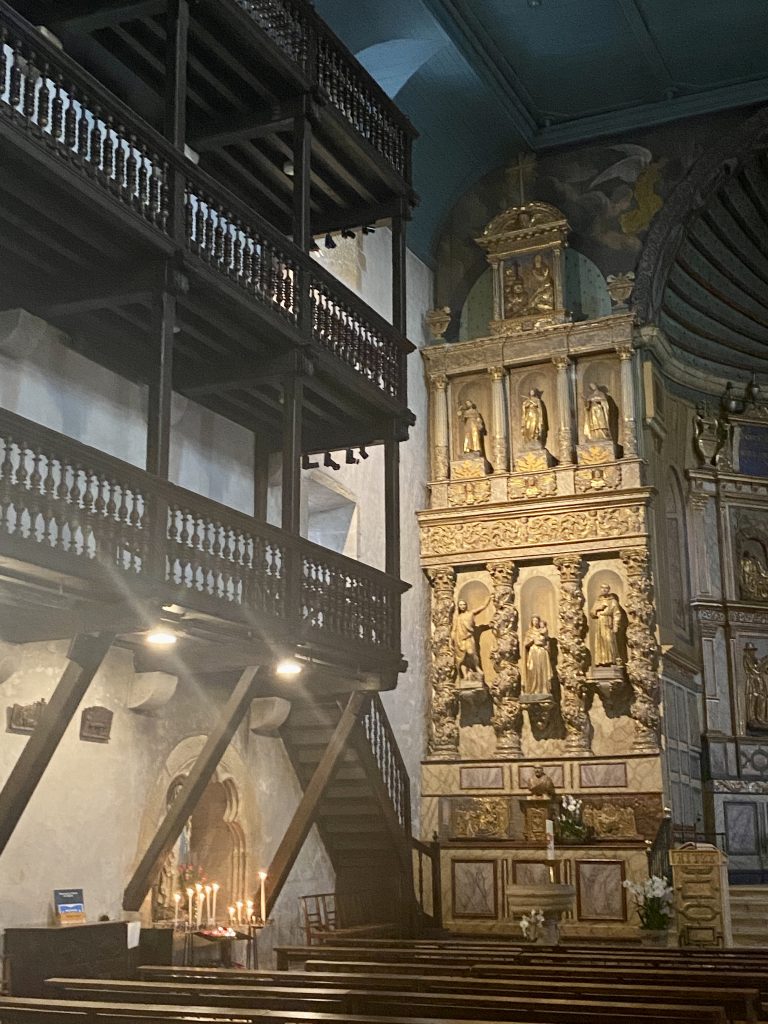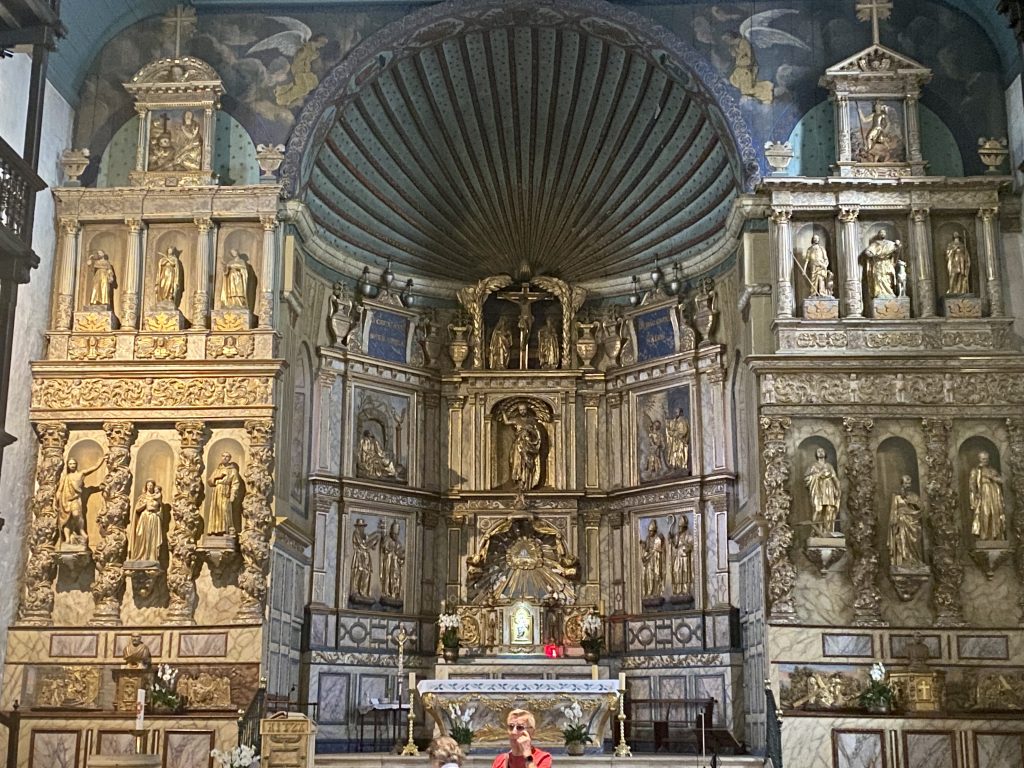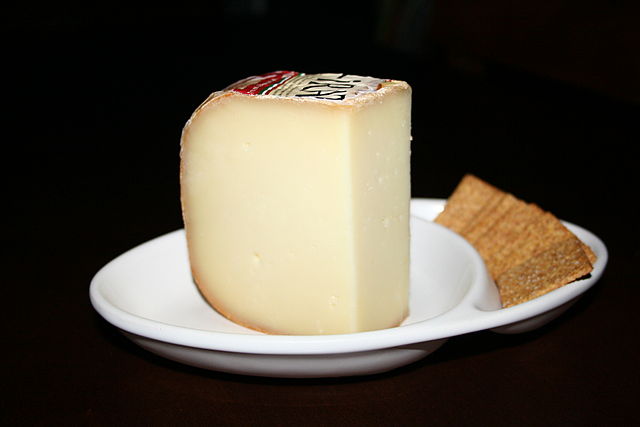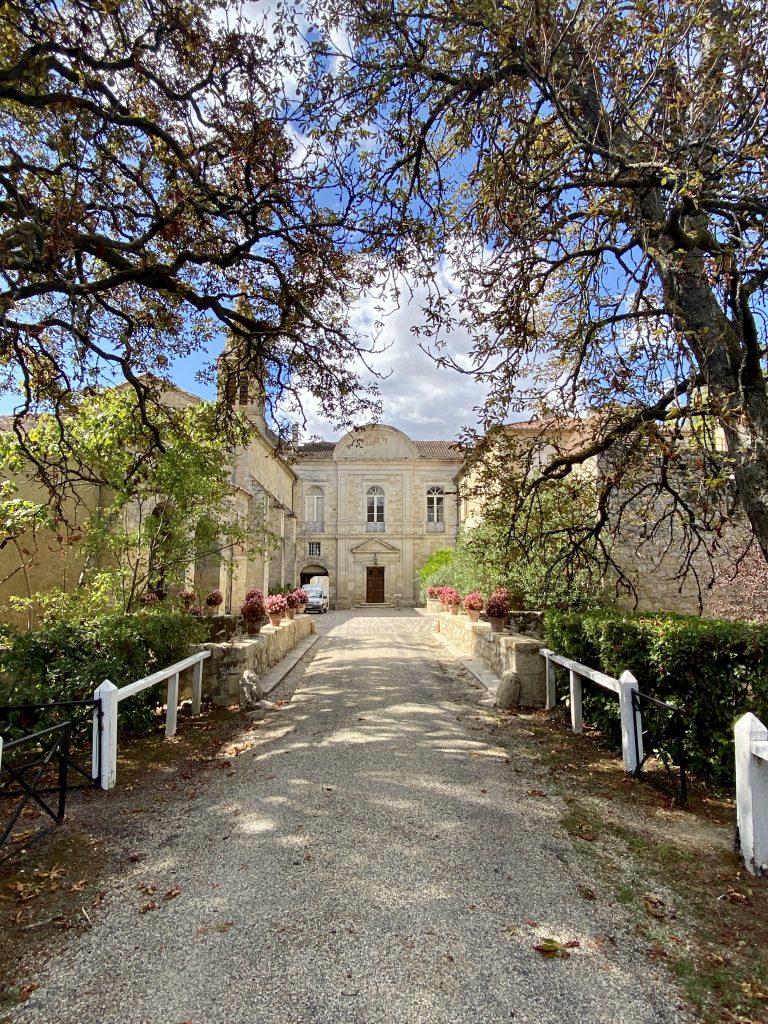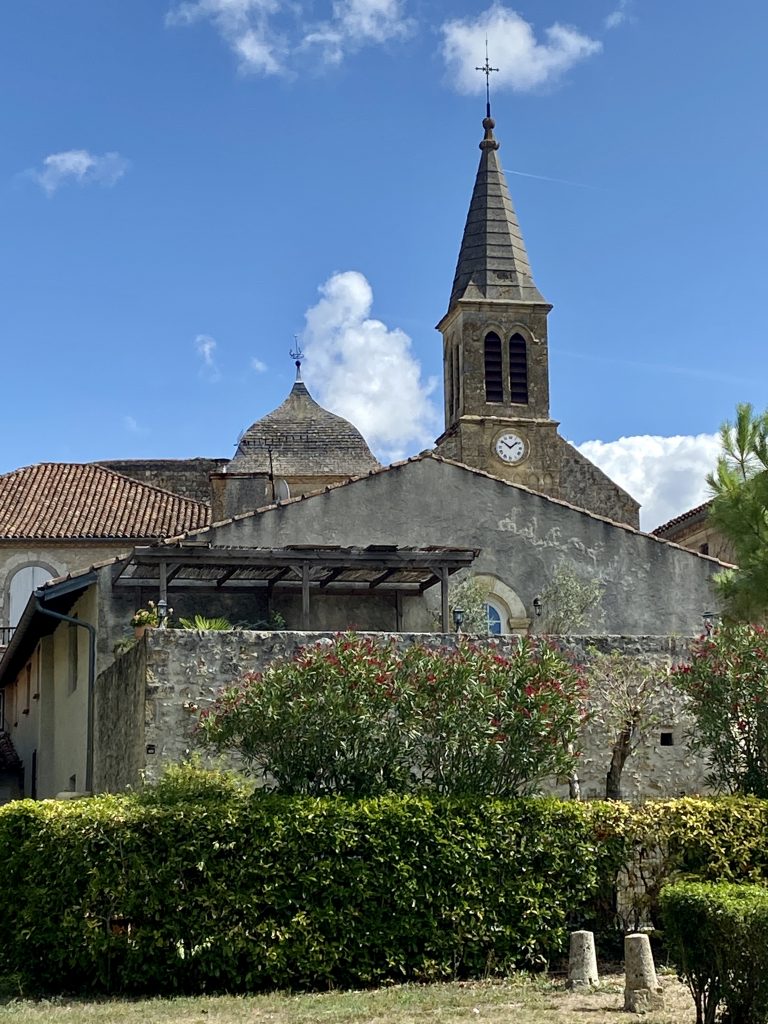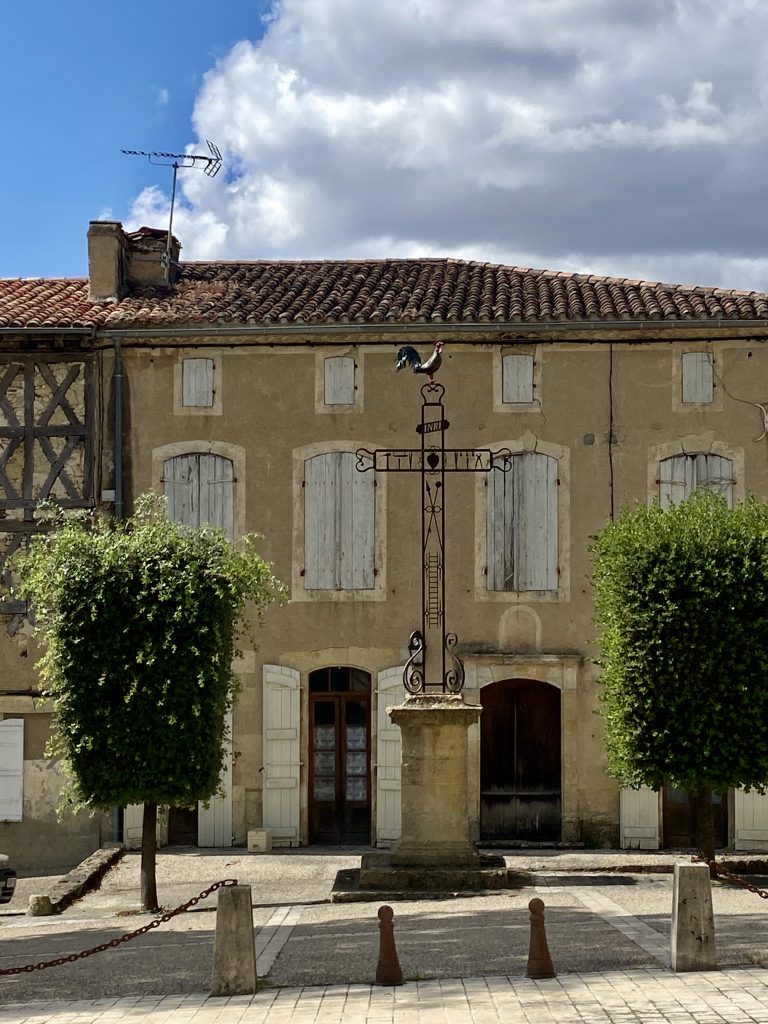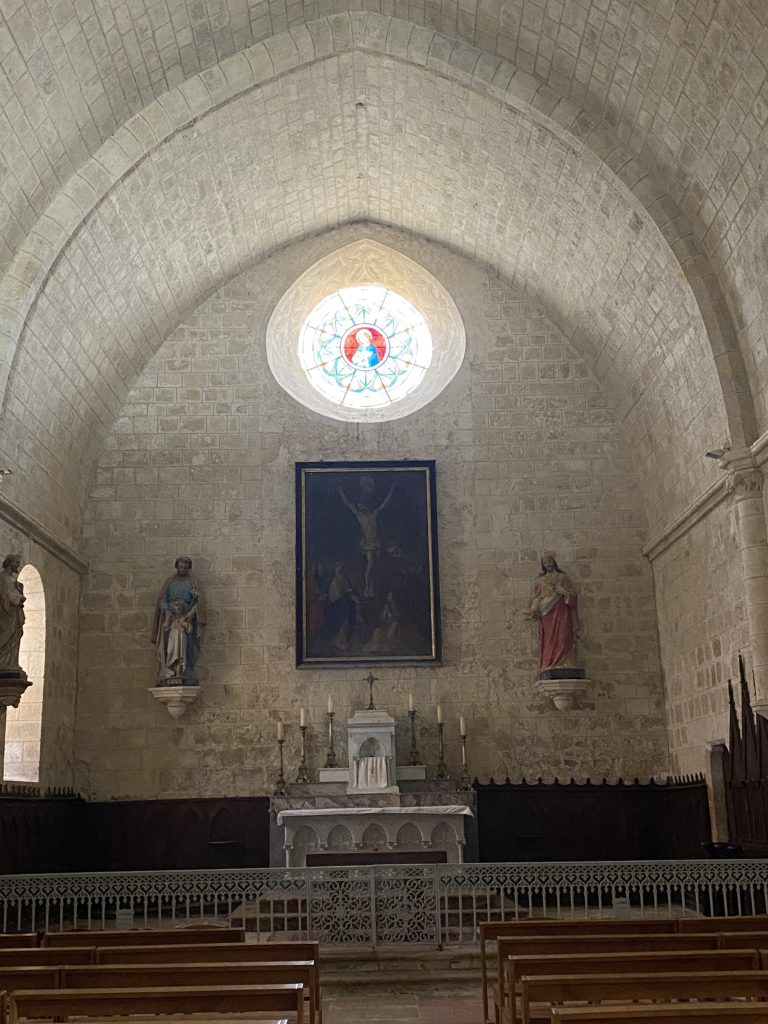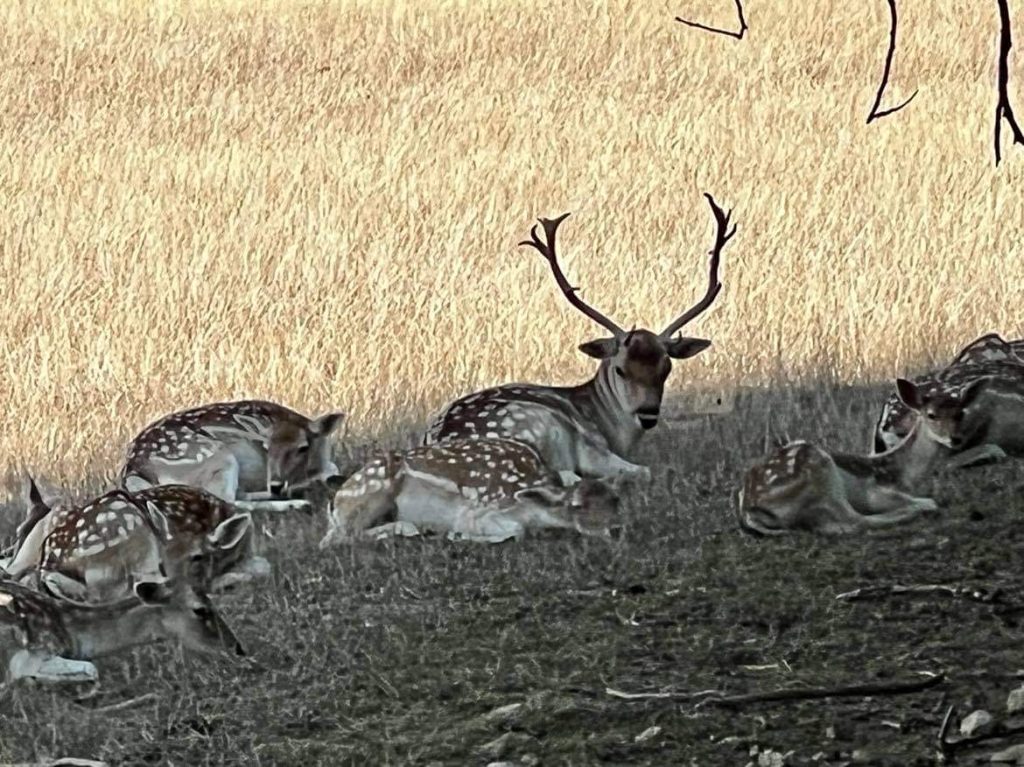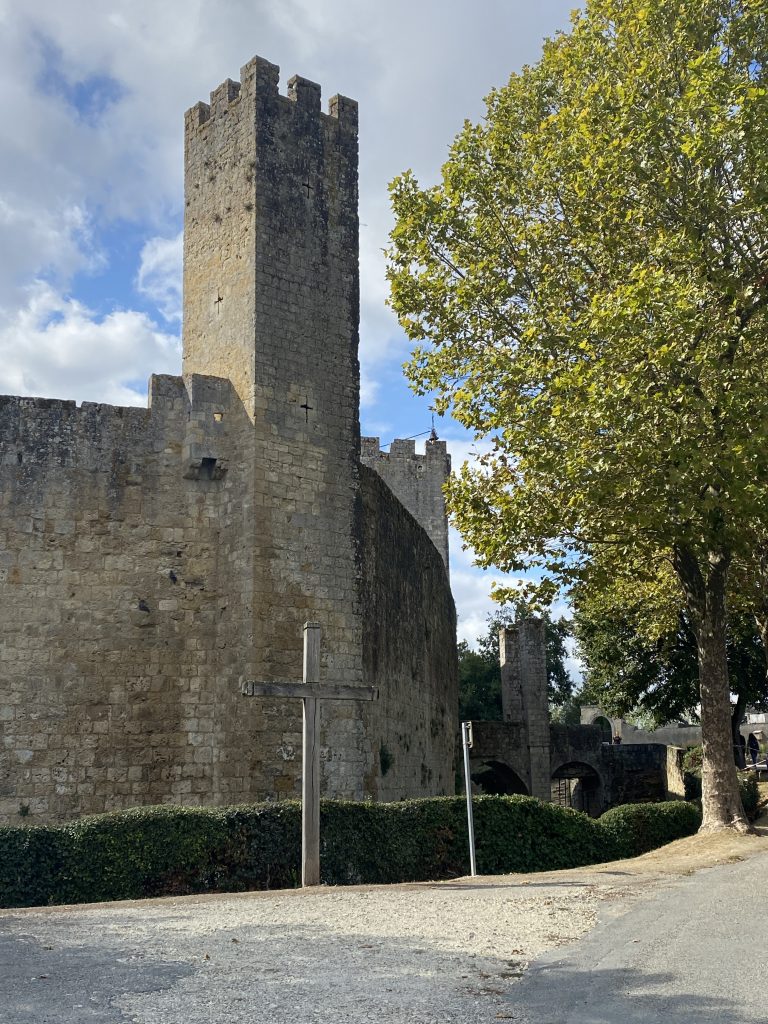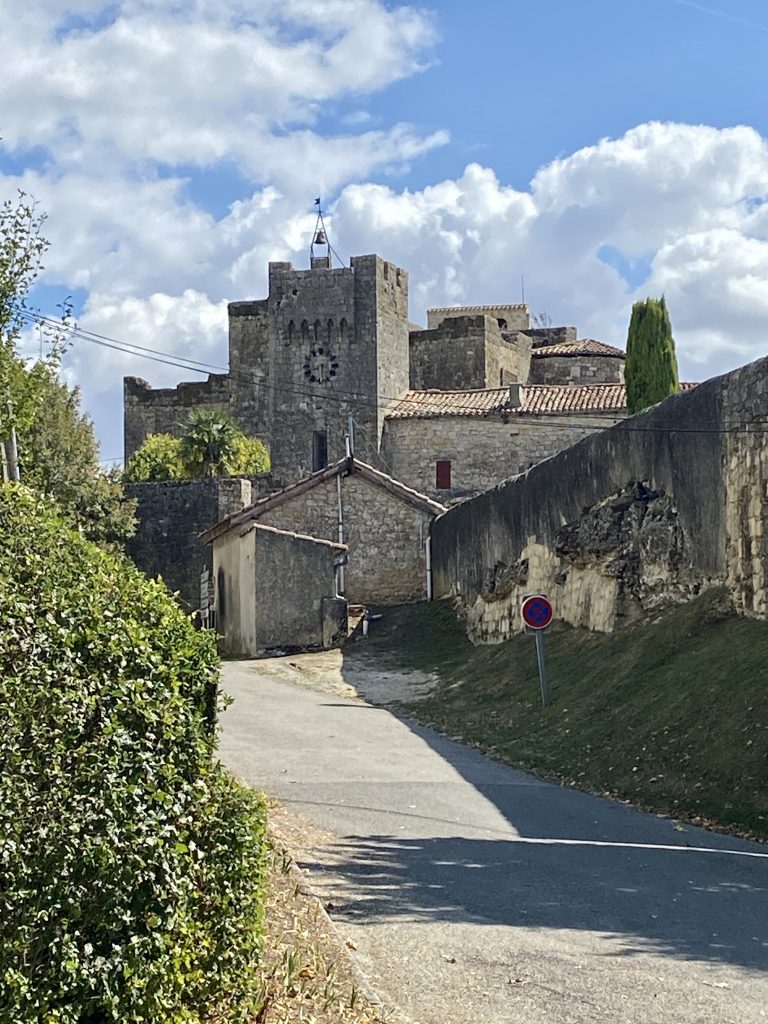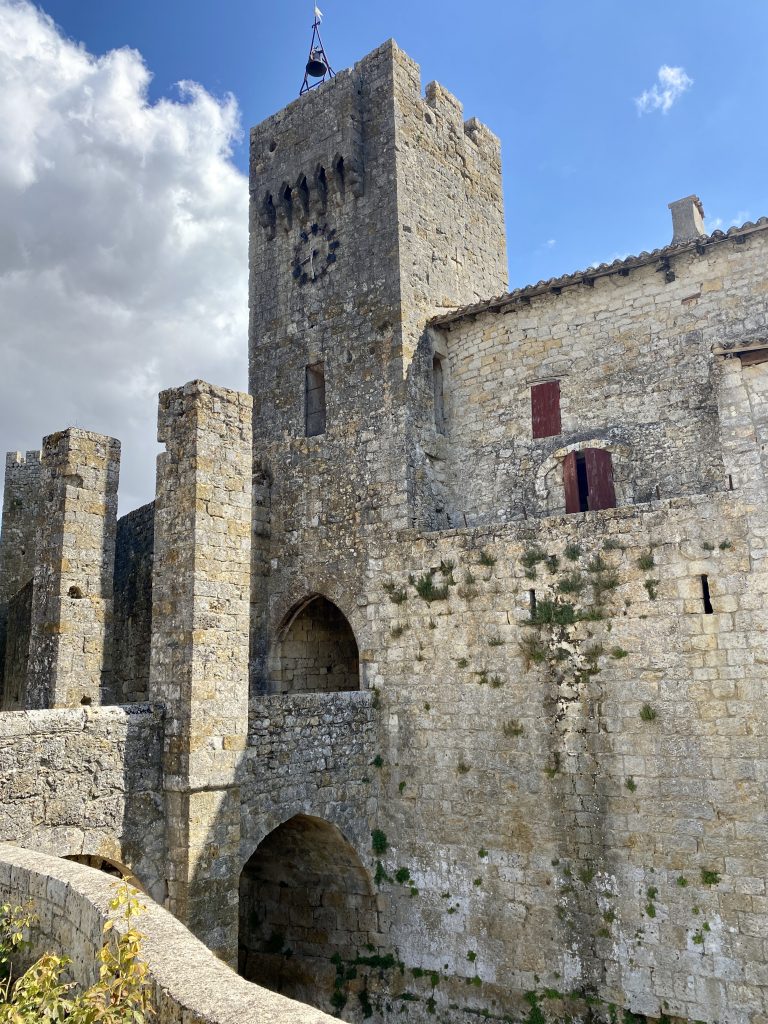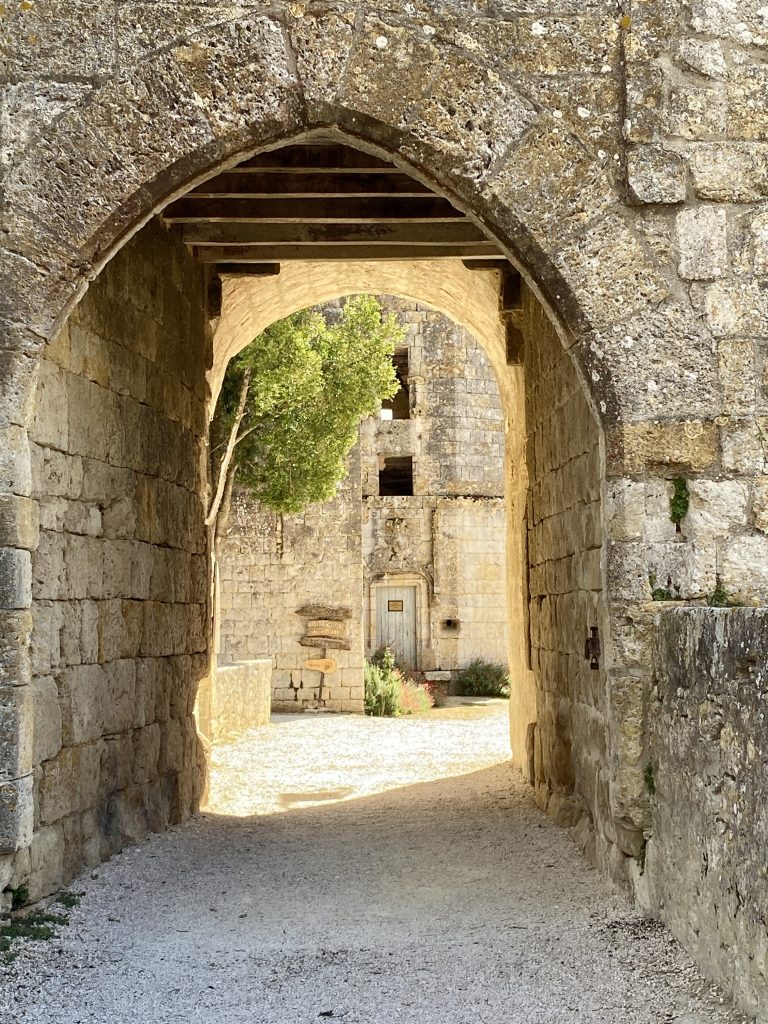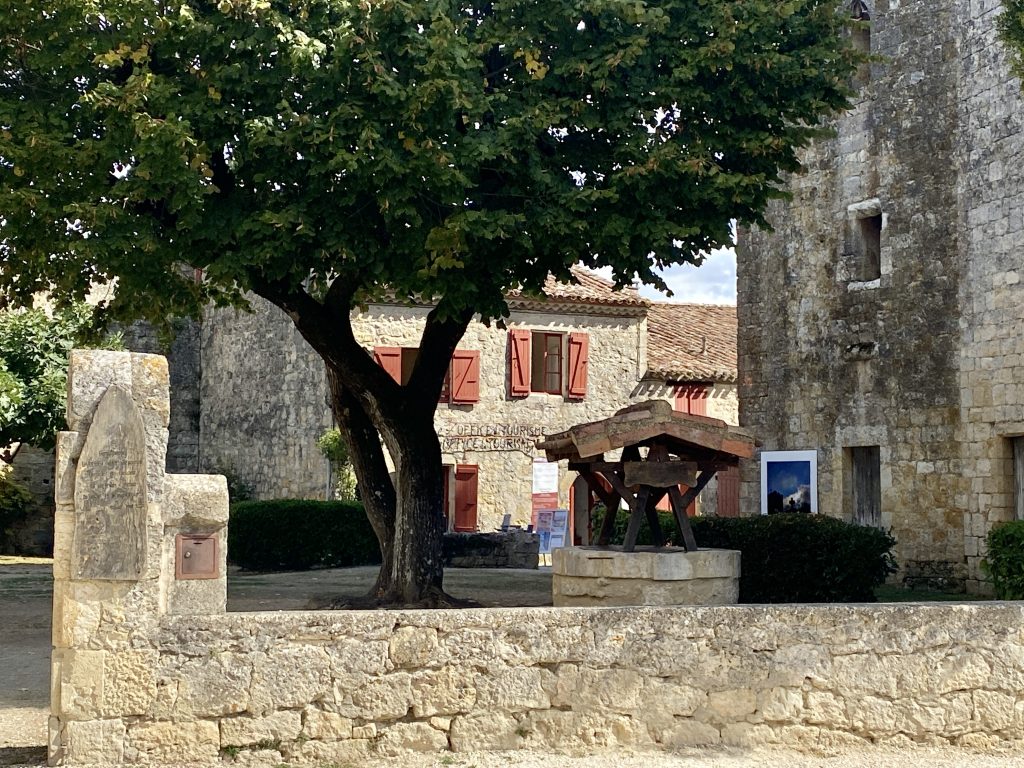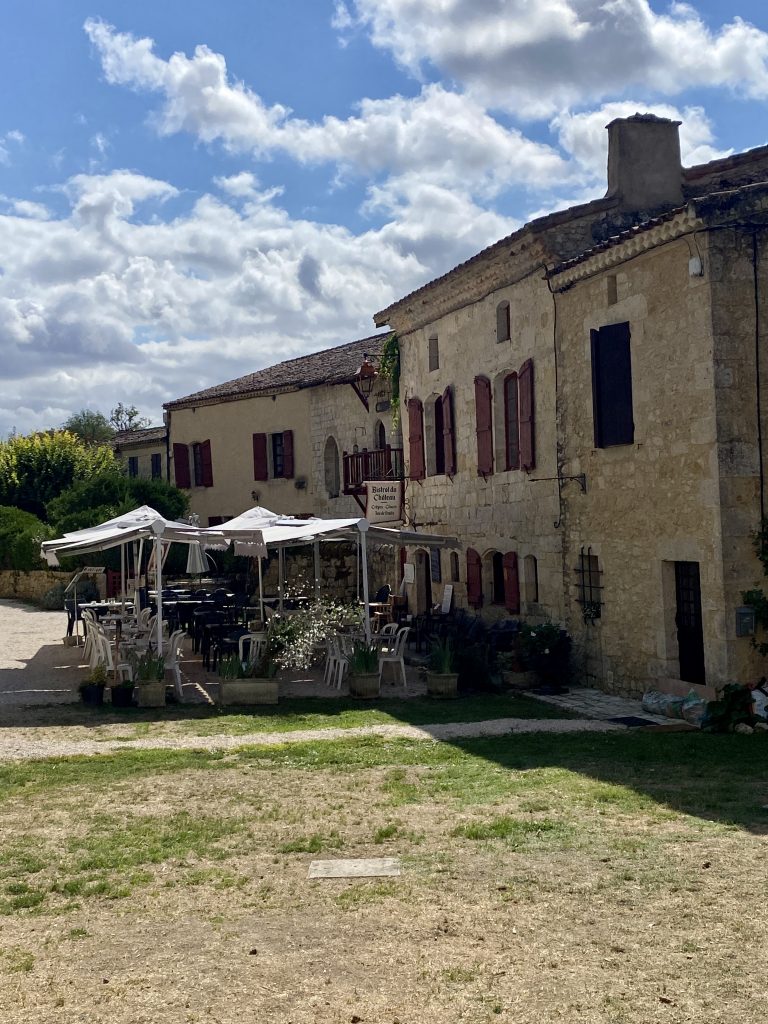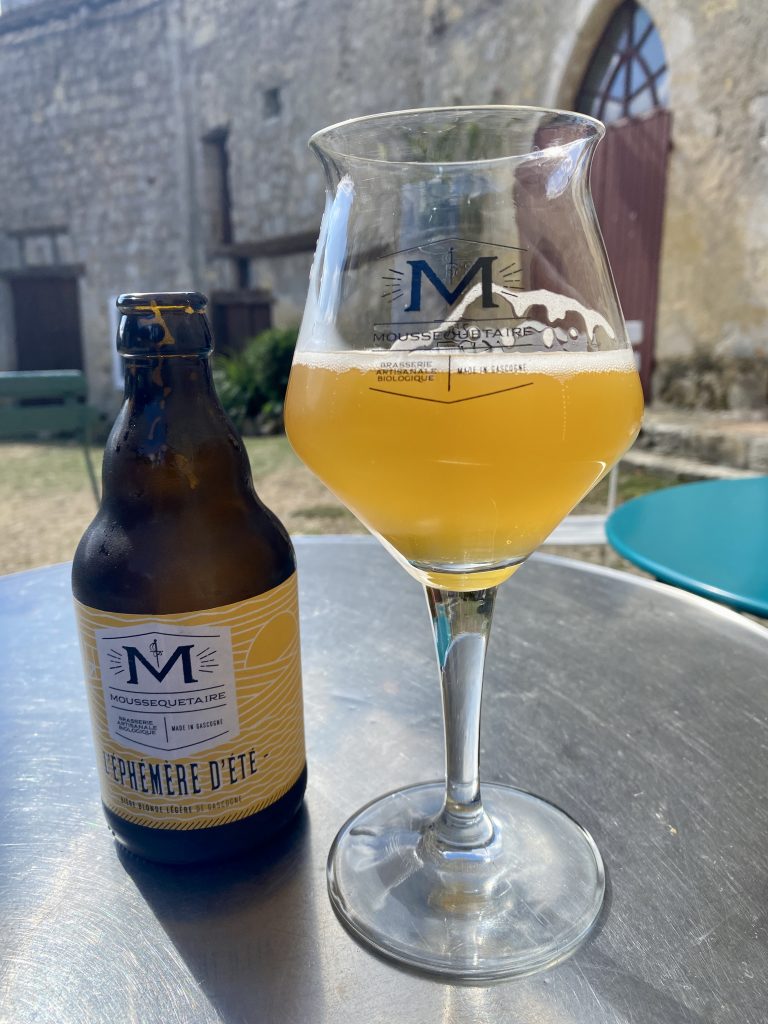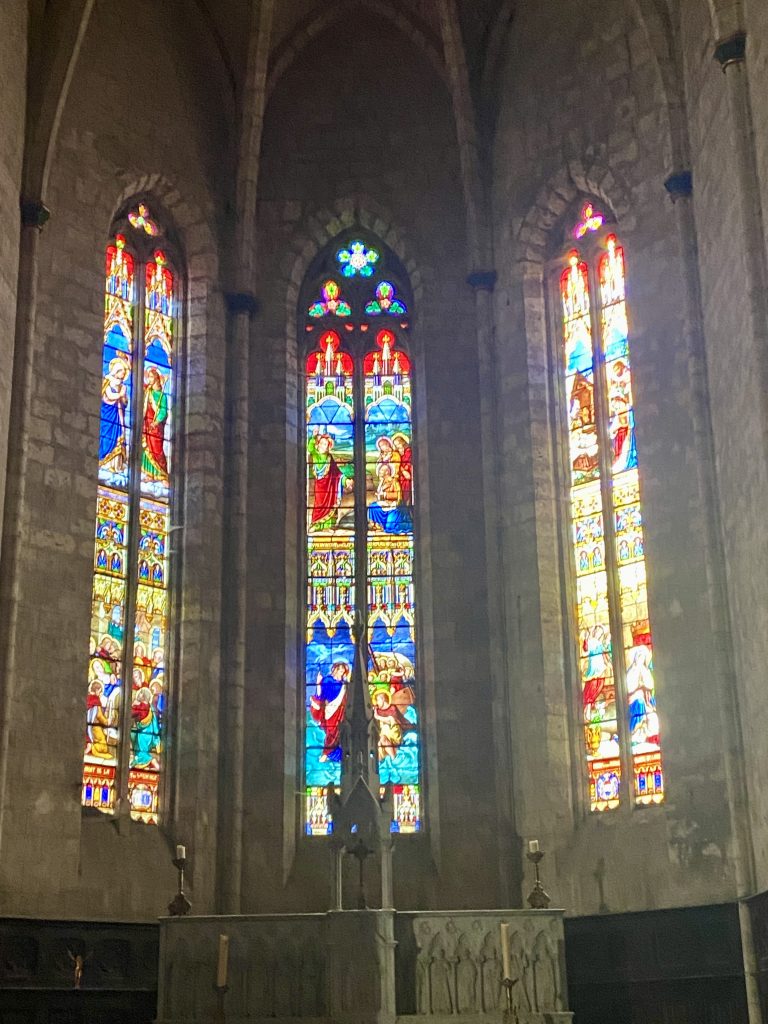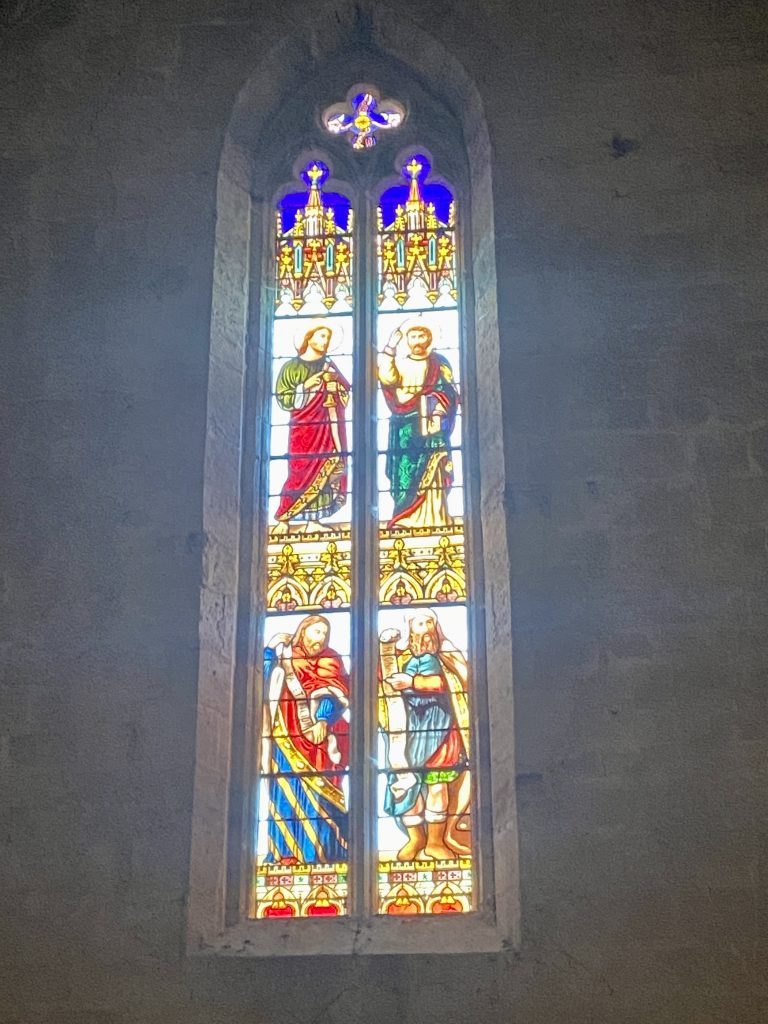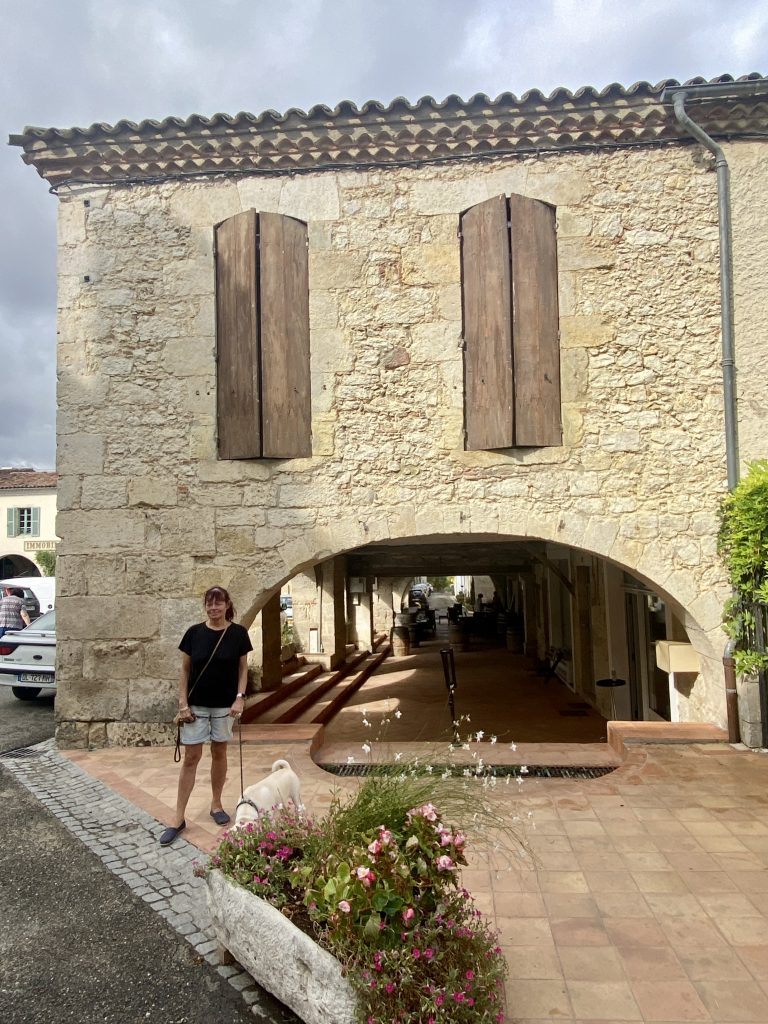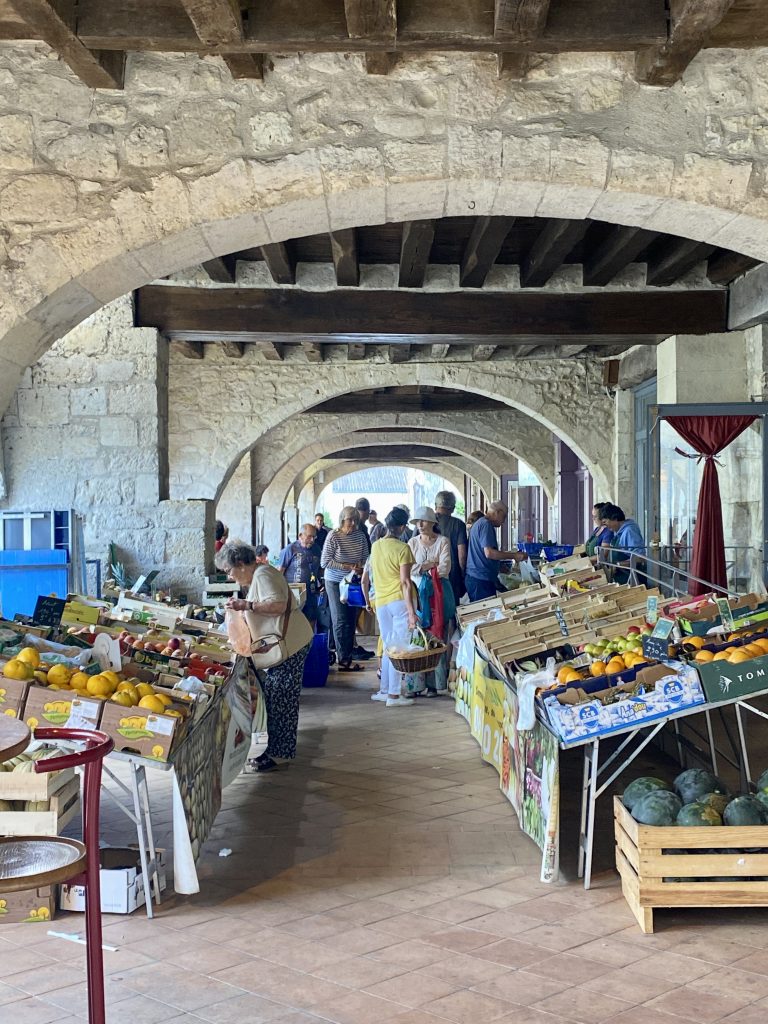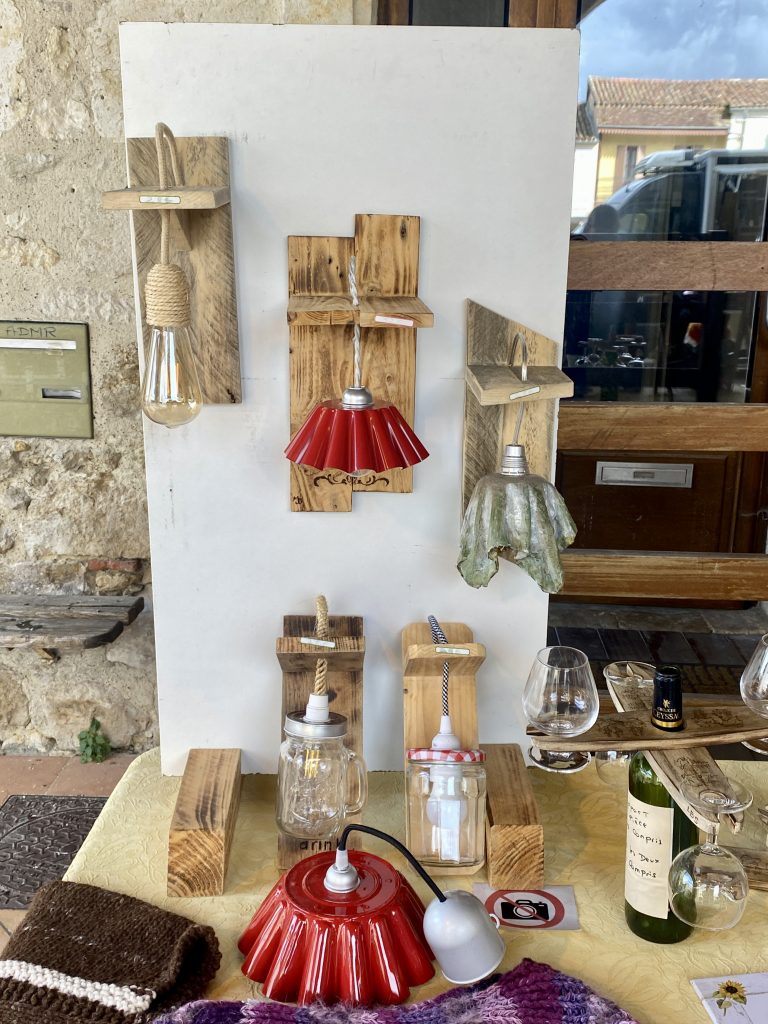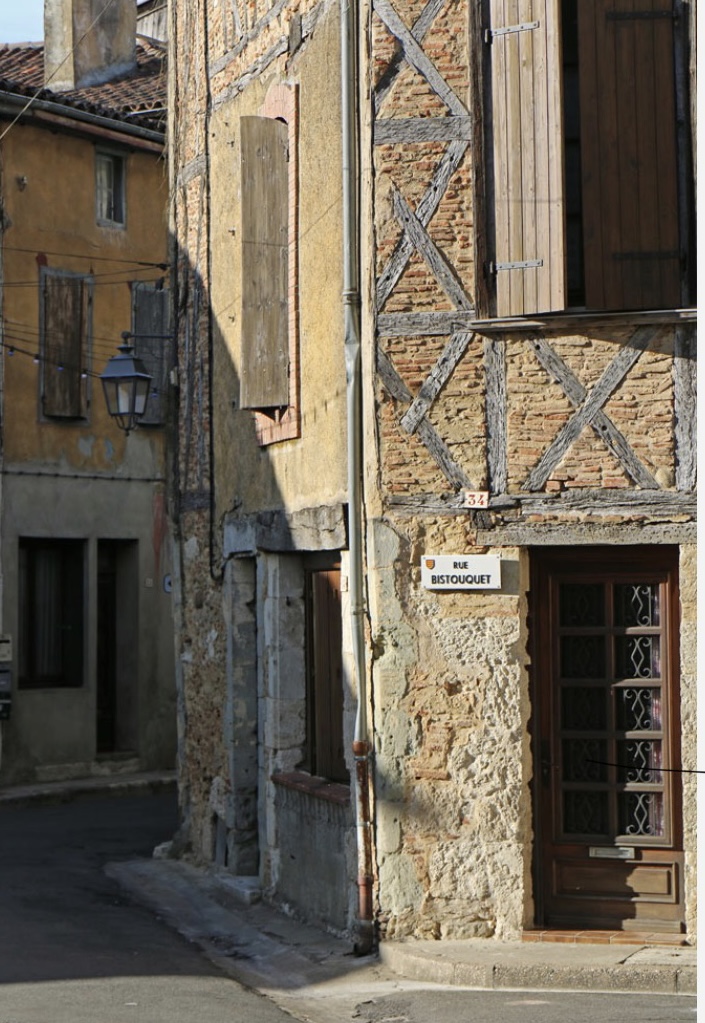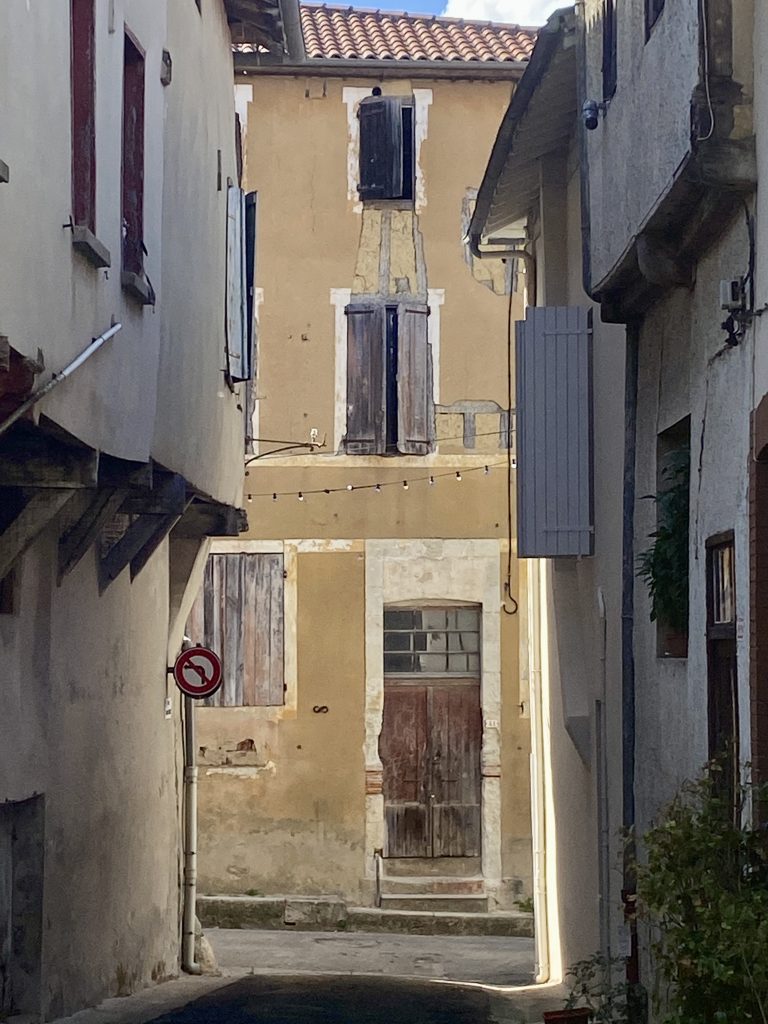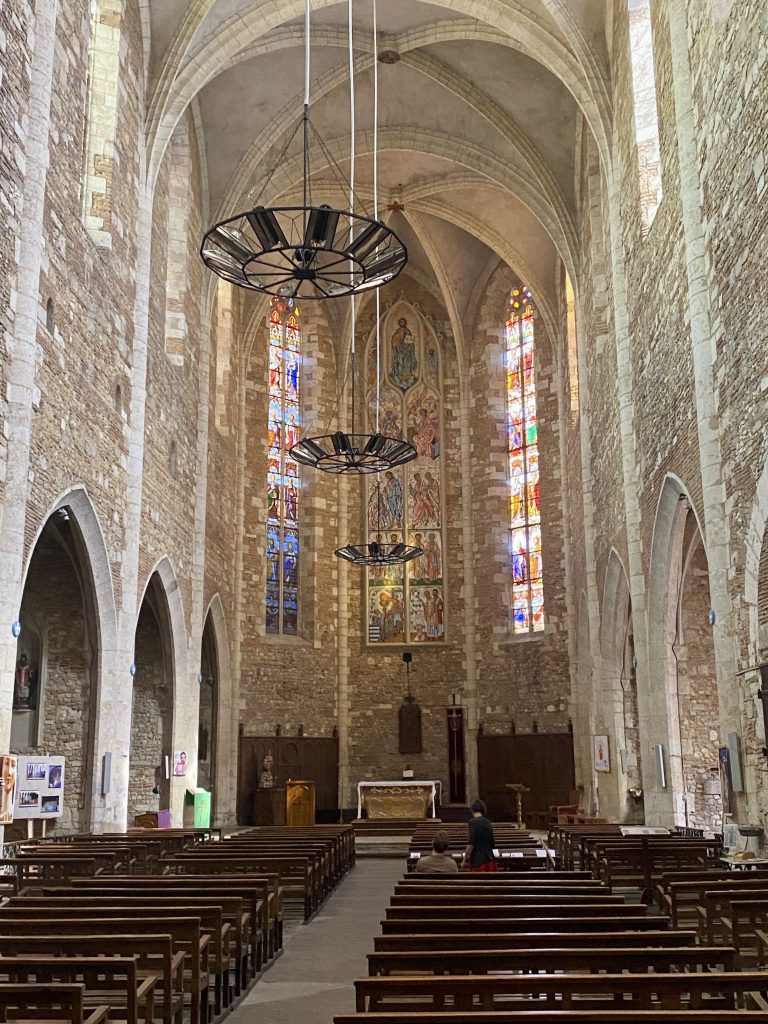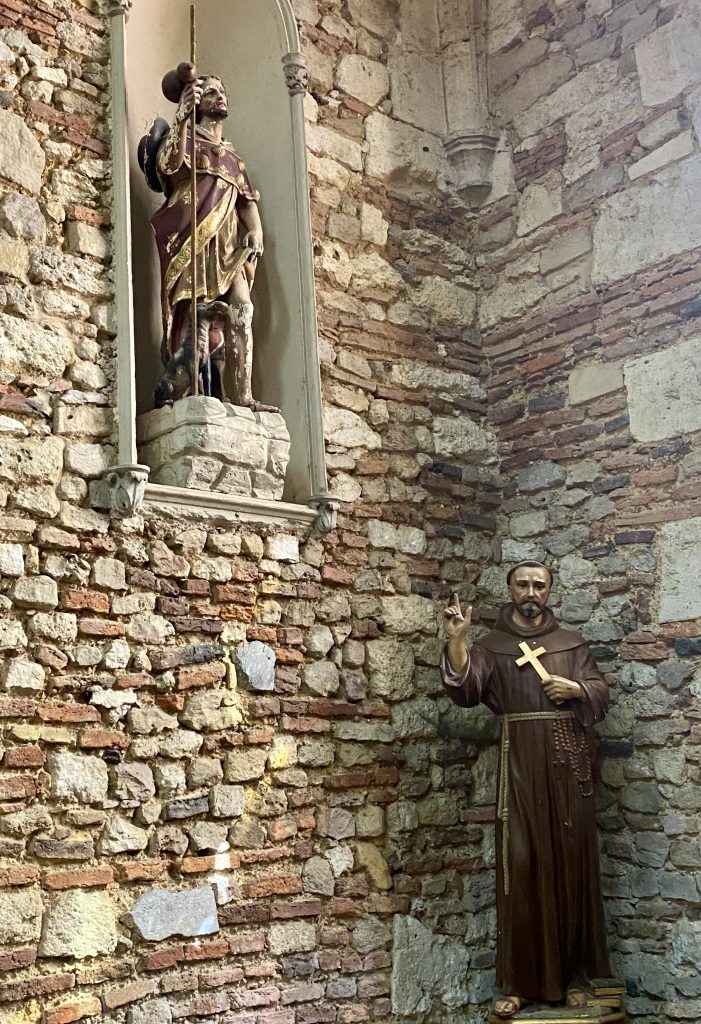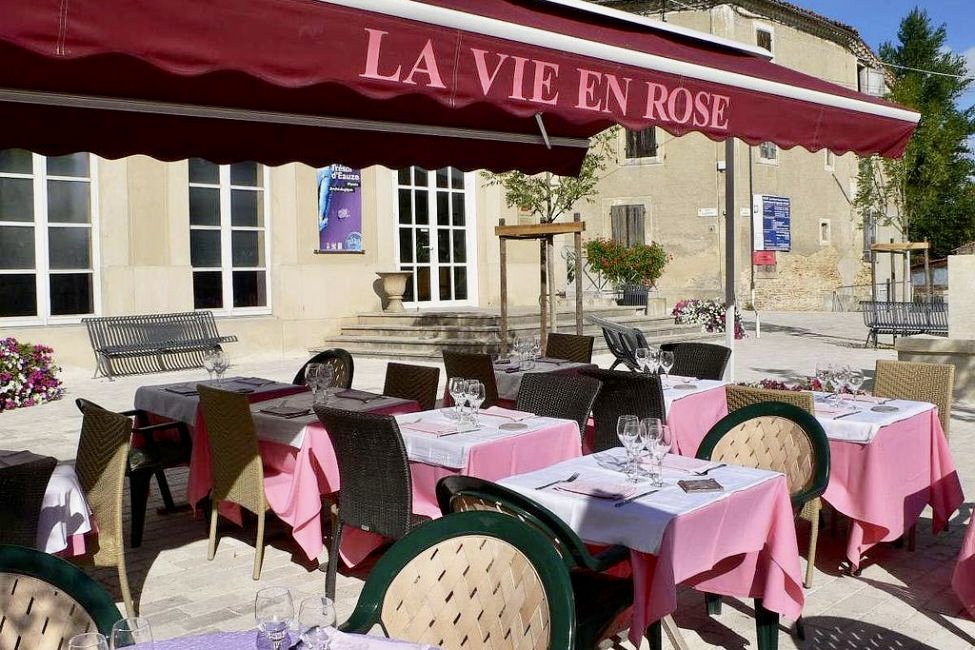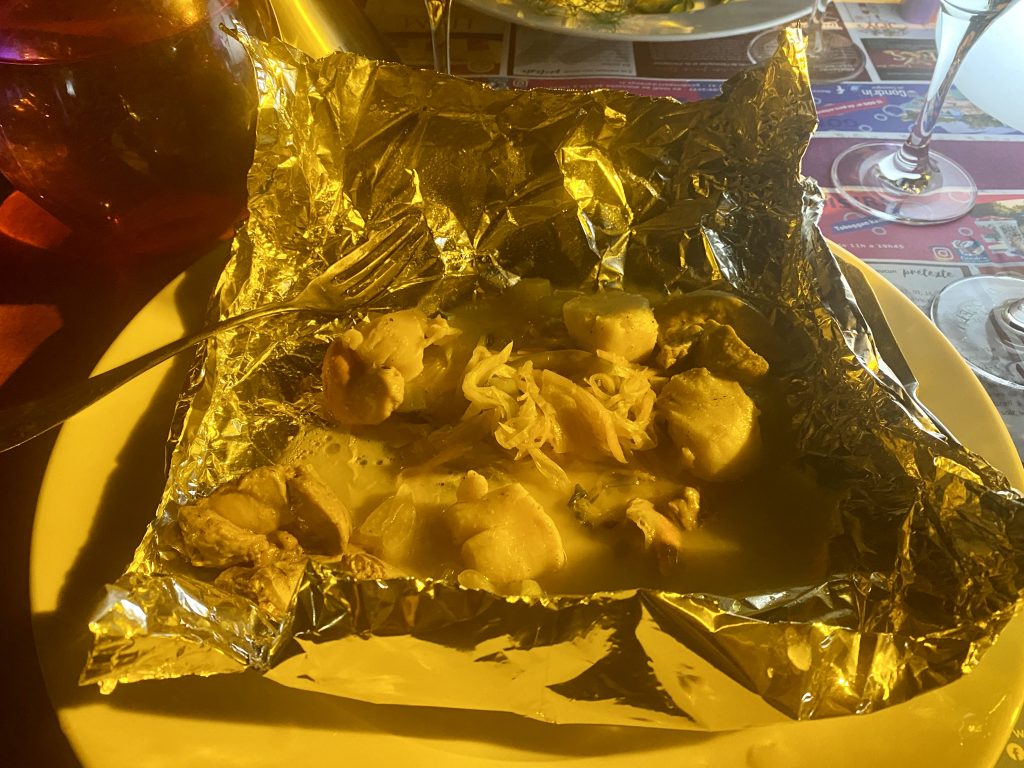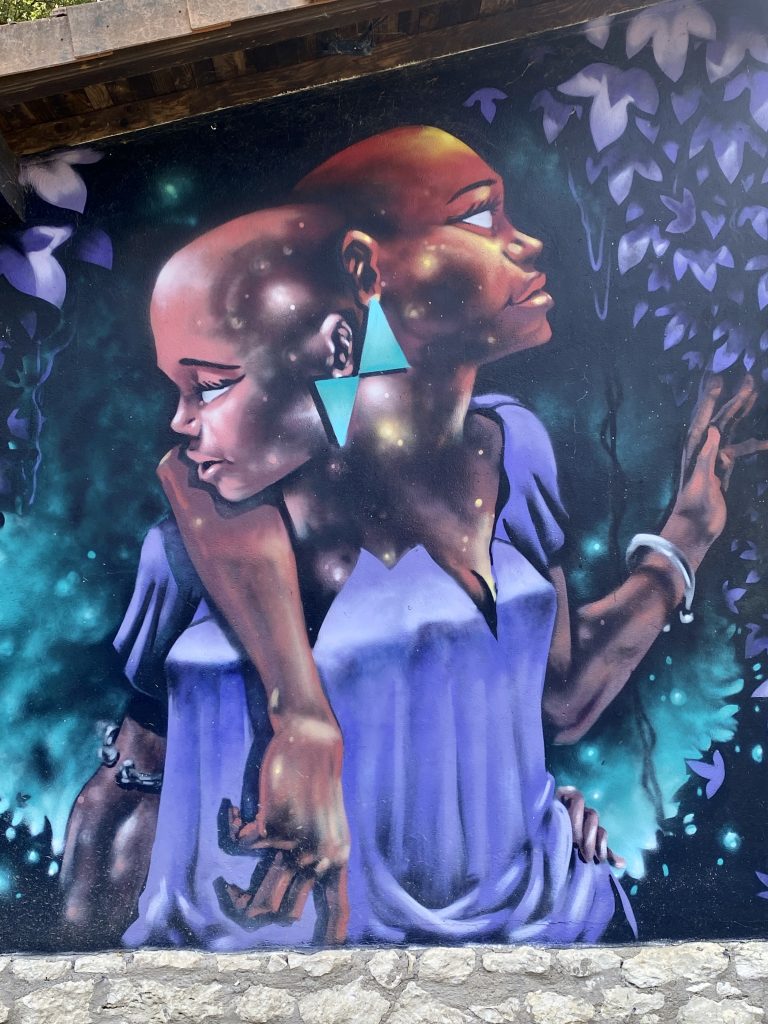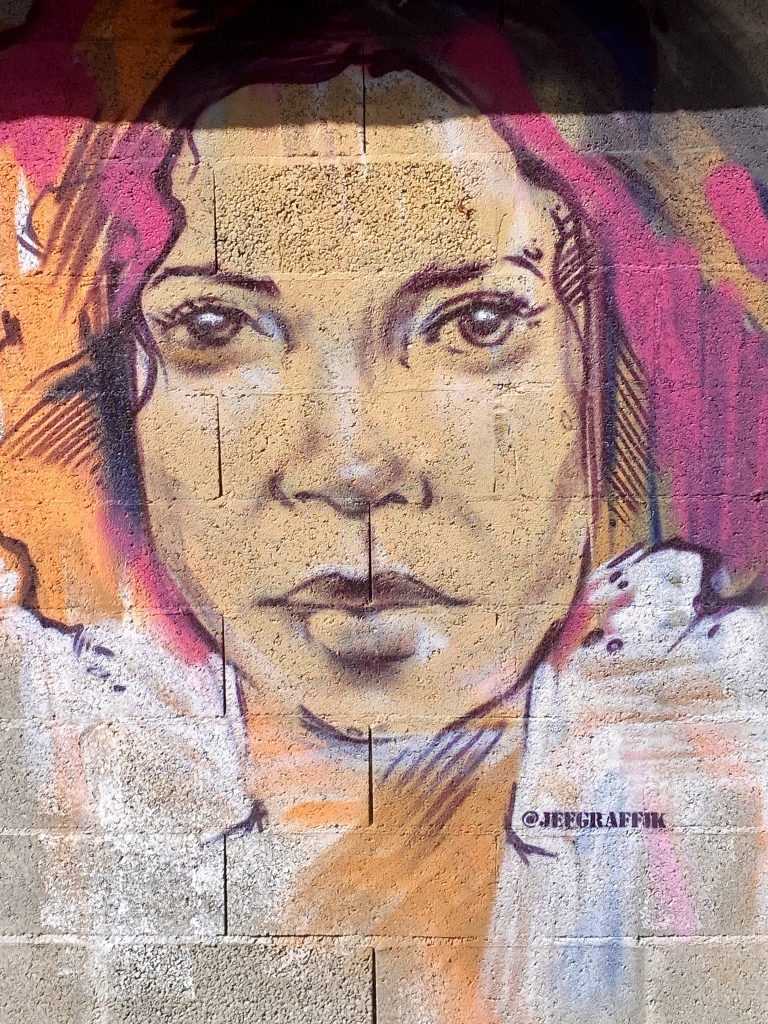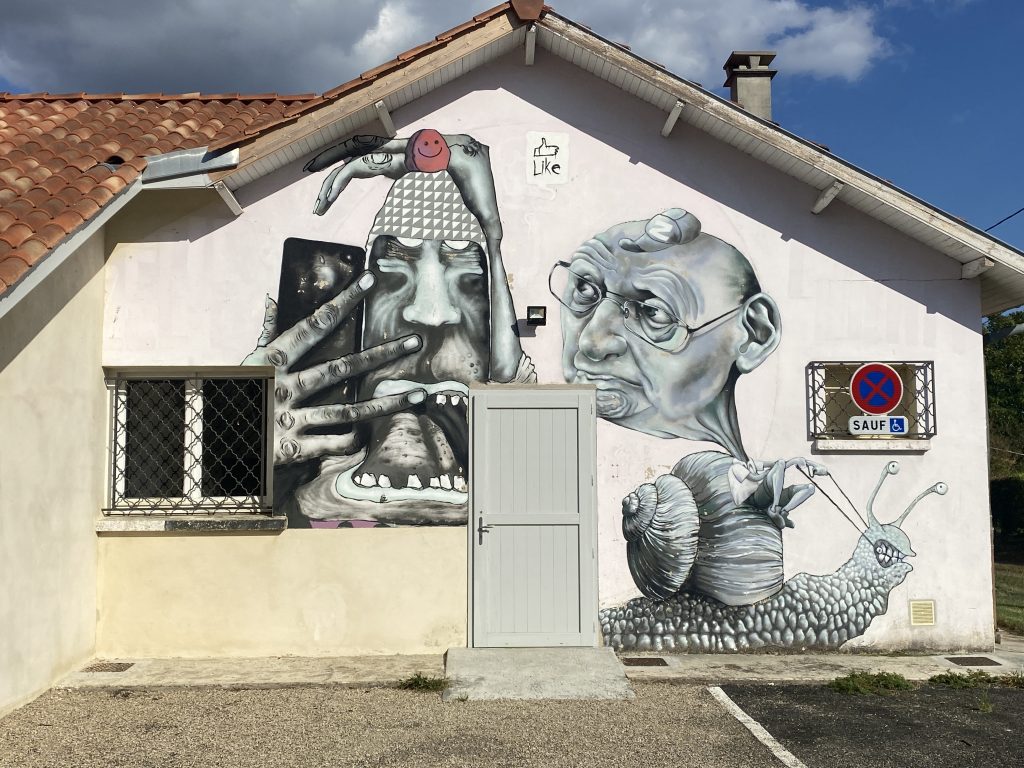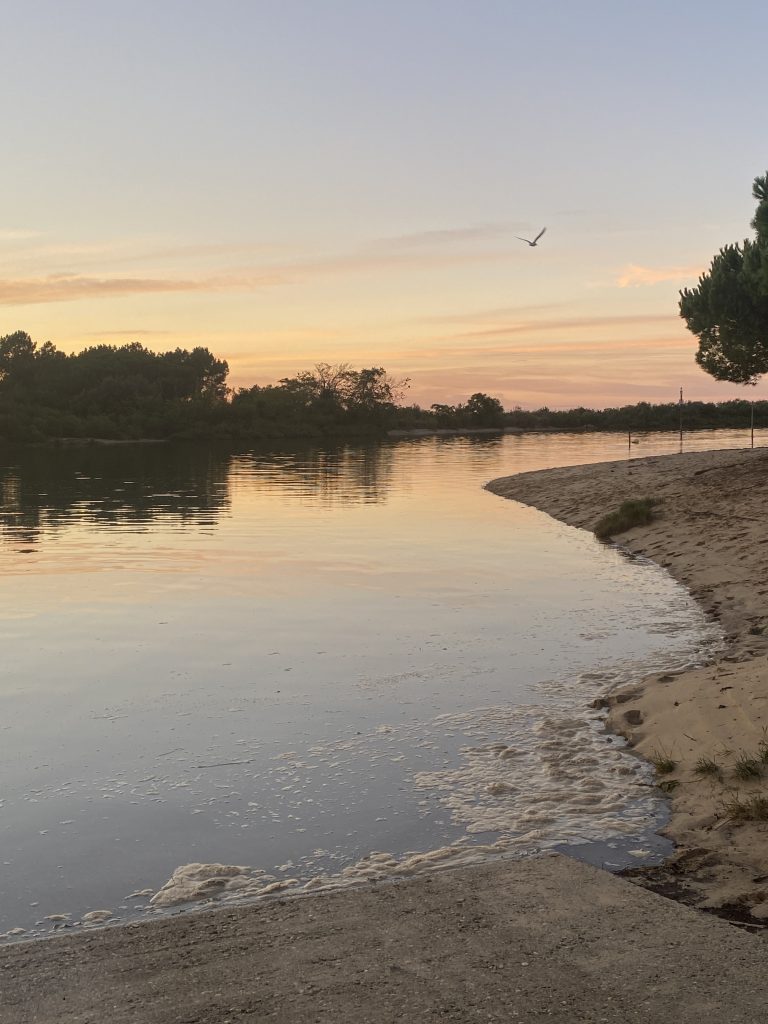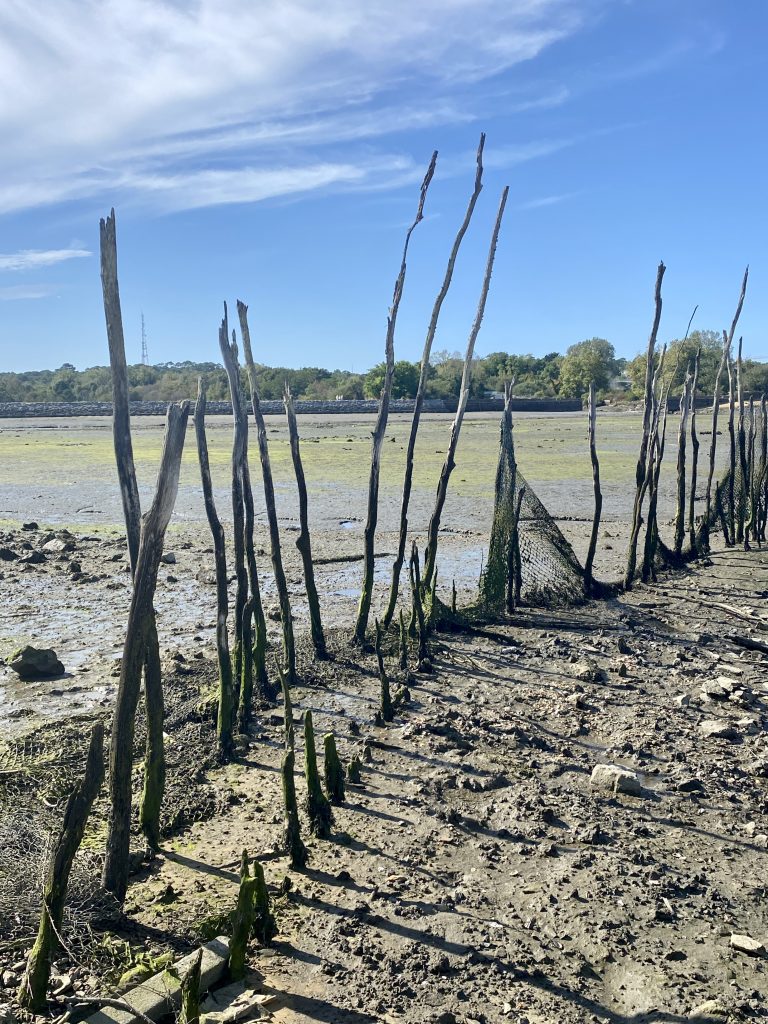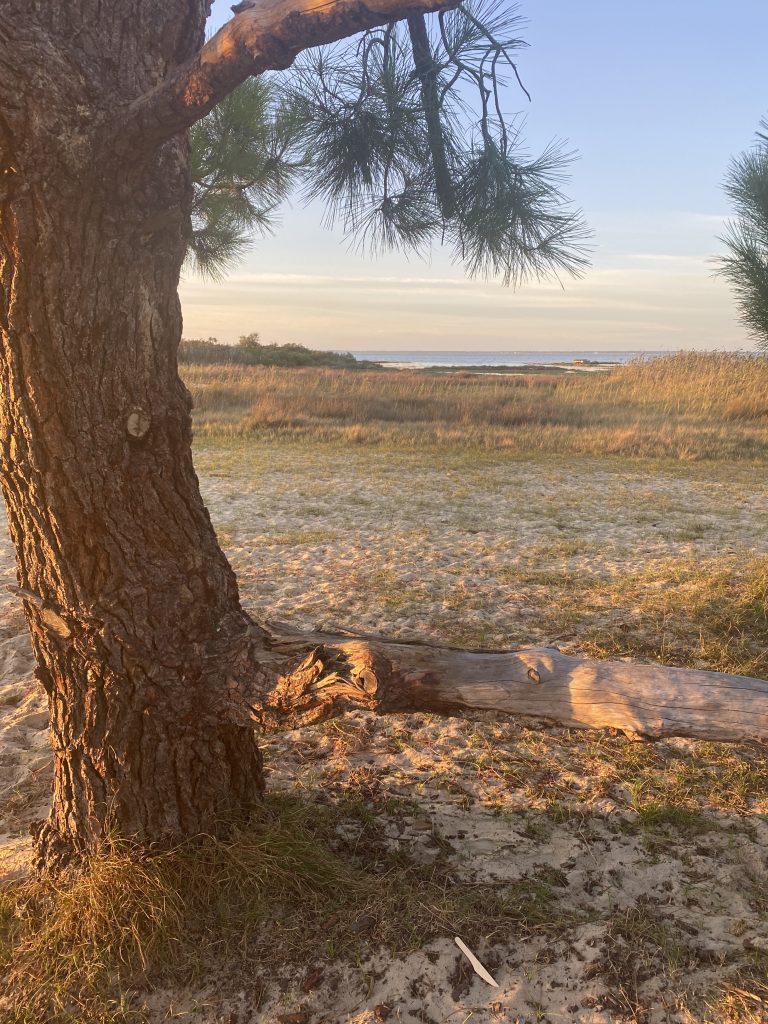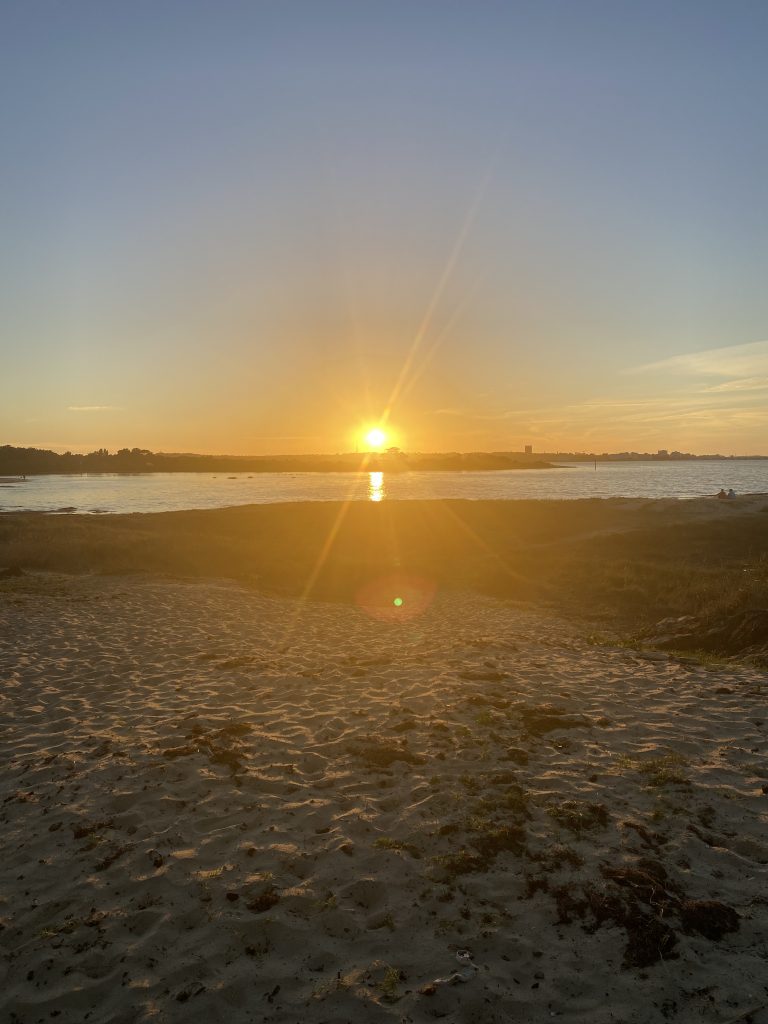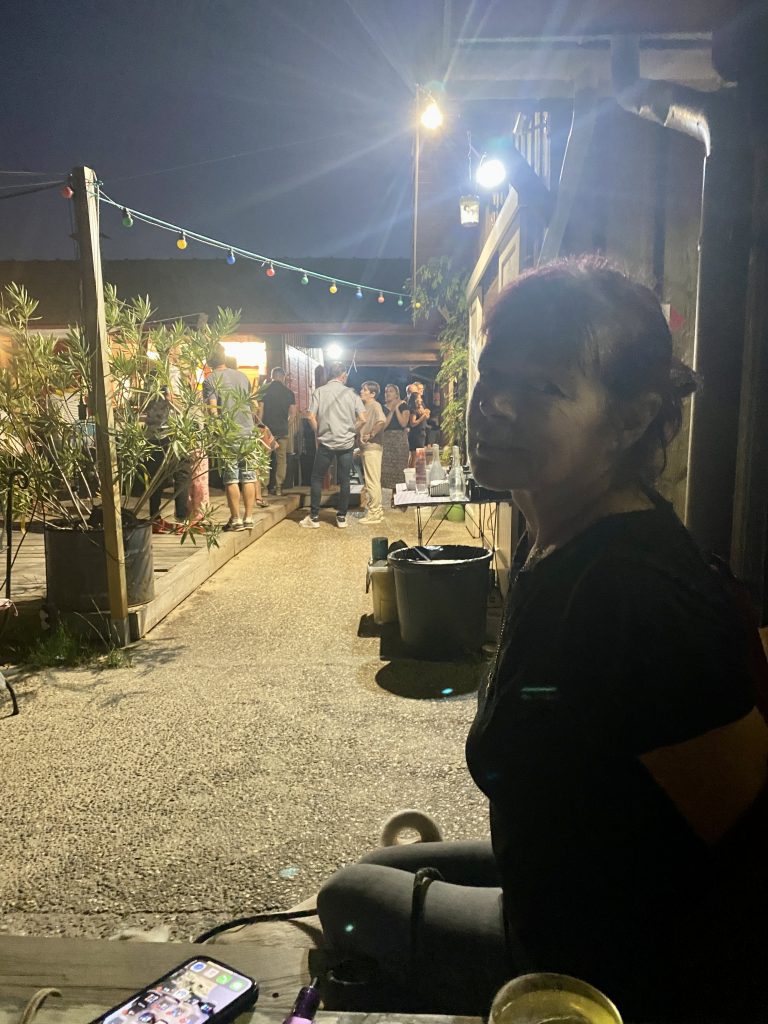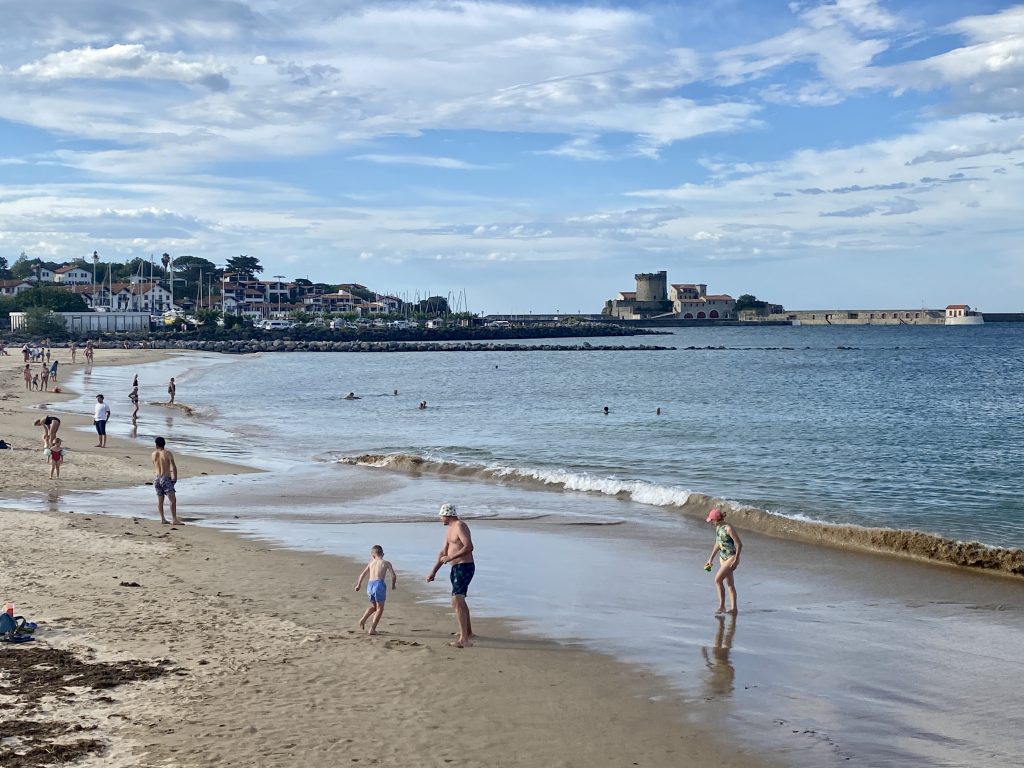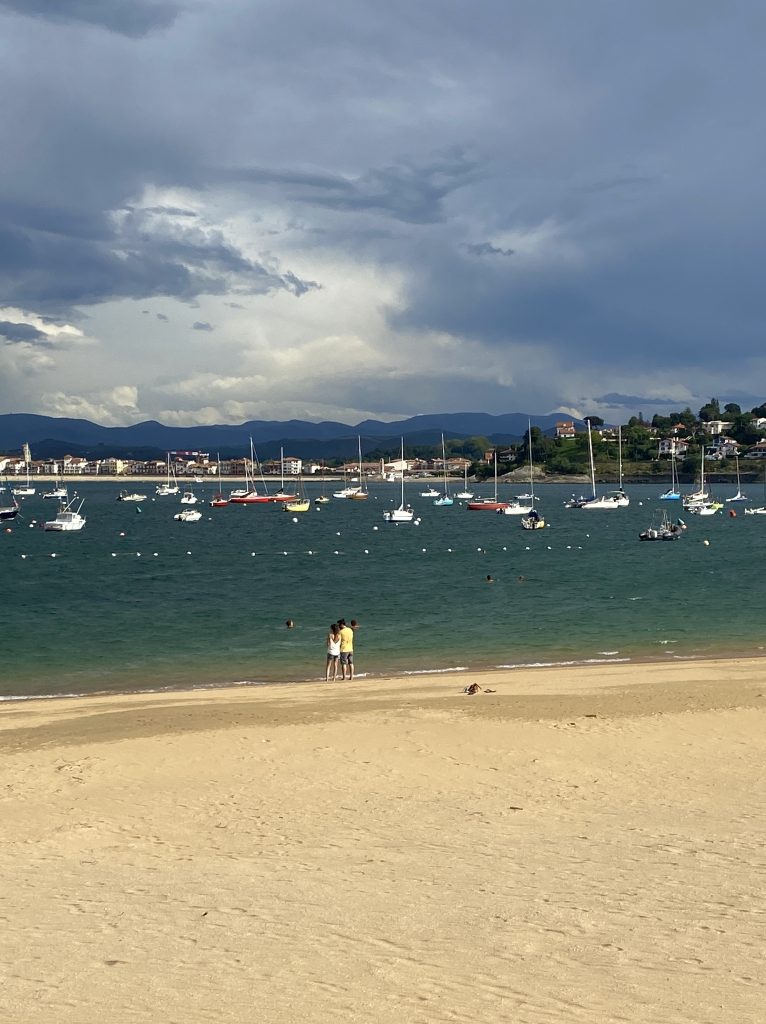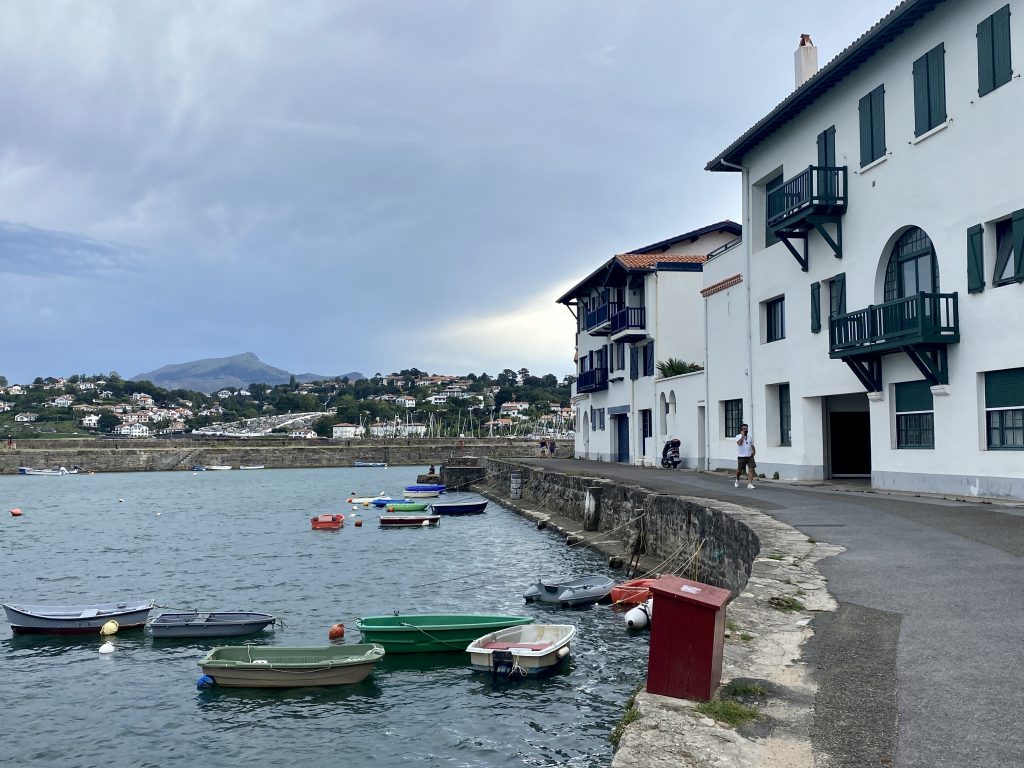Now Troyes (pronounced Tois), capital of the Department of Aube in the Grand Est Region, is definitely worth visiting, notwithstanding it’s large population (60,000+ people). It has been described as an overlooked gem and I would concur with that description. Our campsite was some 10 kilometres south west of the city but we were quite happy making two trips into the city during our short stay, one in the evening and one during the day.
It’s a pretty city. I have never before seen such a huge collection of colourful medieval buildings in the one place and; all in such fine condition and, more to the point, being used. This is in part attributable to a large fire in 1524 which devastated the place and required almost the whole city to be rebuilt at the same time. It seems that the great majority of those who couldn’t afford to rebuild in stone, went for 4 storey half timbered buildings in pastel colours. I should explain that in those days, local taxes were calculated according to the size of the building’s footprint and so it made sense to build upwards – hence the four stories. The result is very impressive with numerous cobbled streets packed with similar sized leaning structures. The colours too are interesting with the predominantly peach and pistachio pastels now giving way to brighter more vivid blues, reds and yellows.
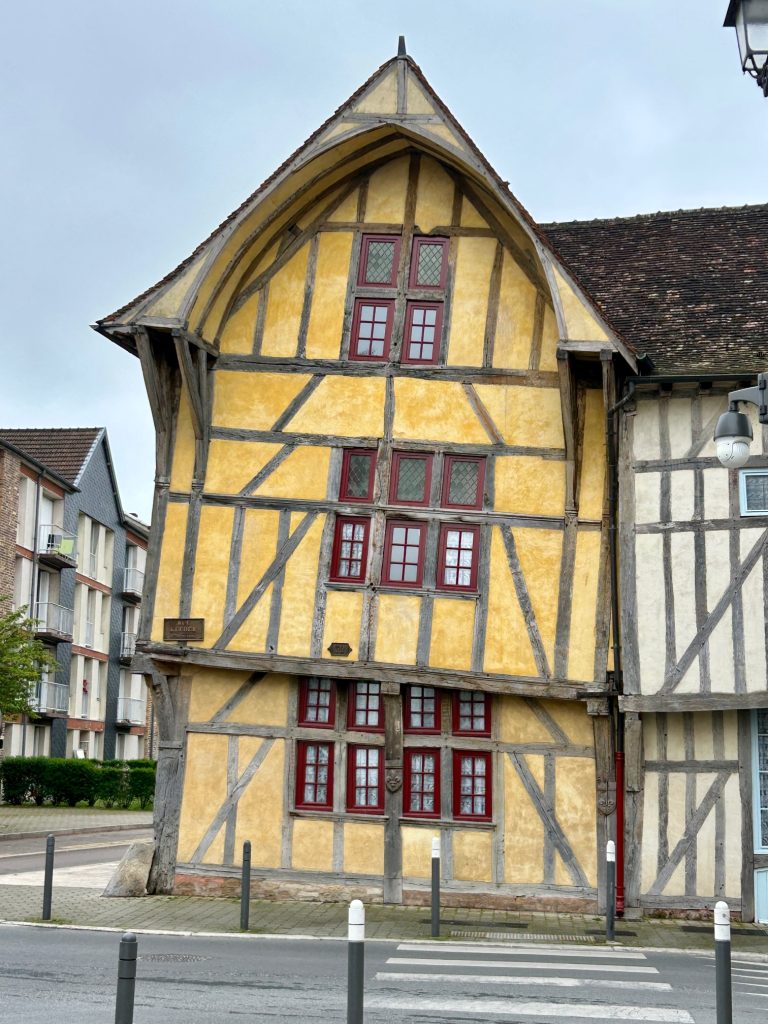
This building, the Maison du Dauphin has a particularly strong list.
A particularly picturesque street is the very small Maillard Street, now known as the Ruelle des Chats, where the upper floors of the top heavy listing buildings lean so much they have been joined by wooden beams. It was these beams that allowed resident cats to stroll from one building to another and which prompted the name change.

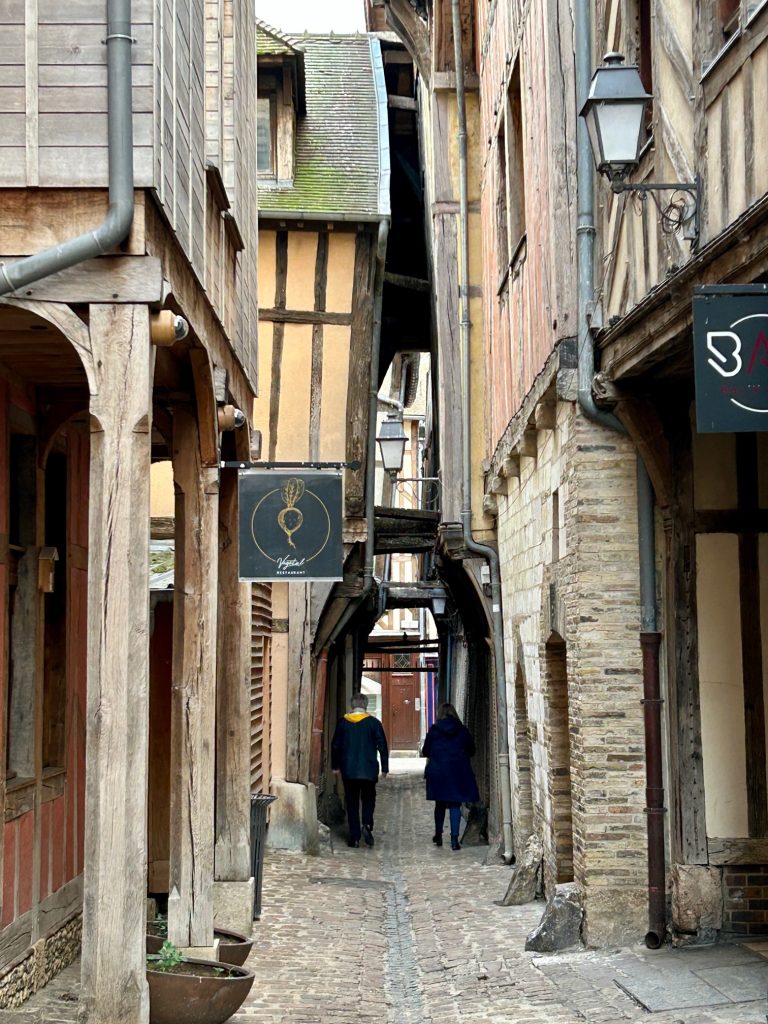
No prize for guessing that the Ruelle des Chats is on the right
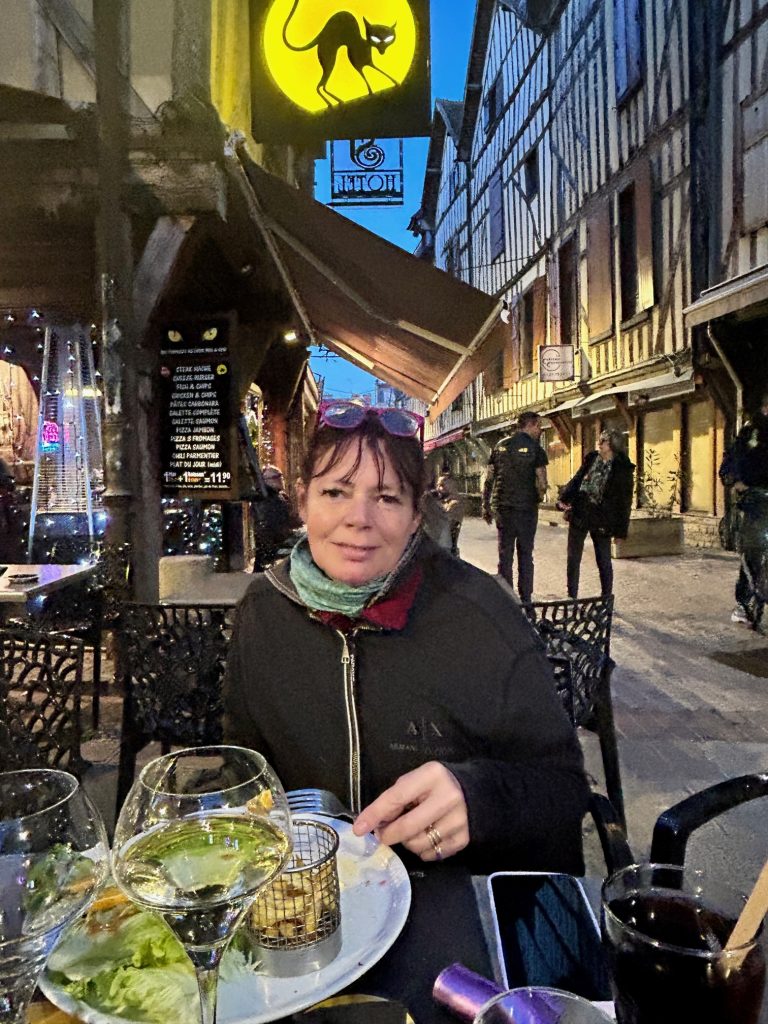
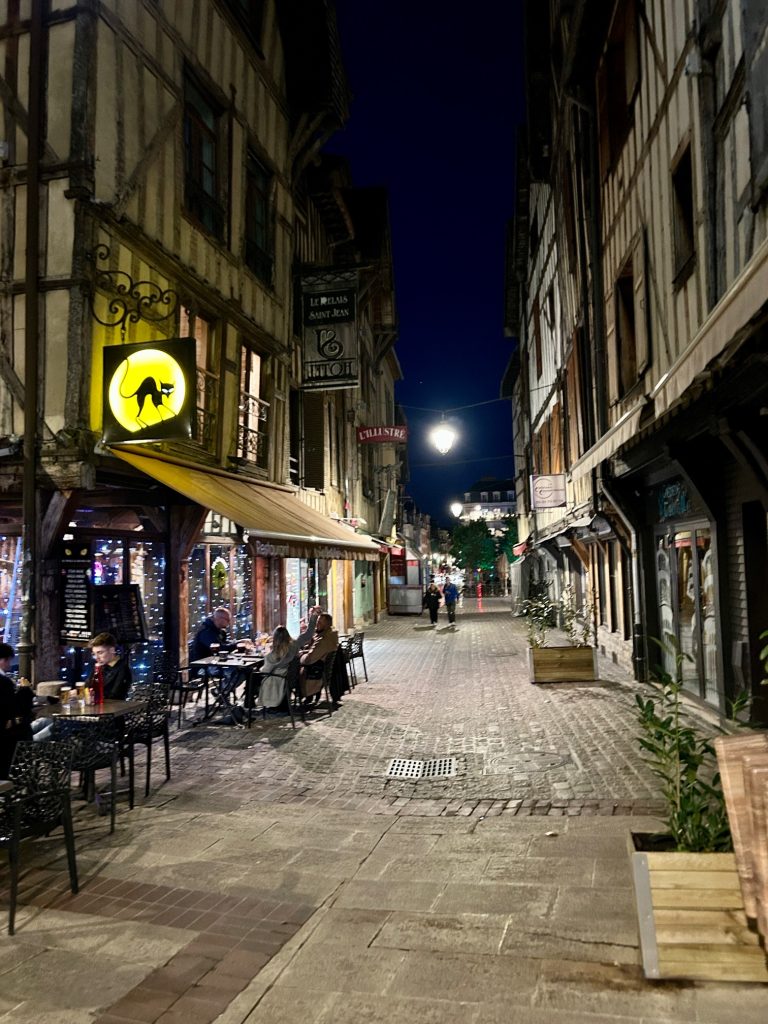
Also of interest, to me at least, are the city’s many elaborate churches. Most prominent are La Cathedrale Saint Pierre Saint Paul (parts of which date back to the 13th century), L’Eglise Sainte Madeleine (that’s 12th century with additions in the 16th century), La Basilique Saint Urbain (13th century but significantly updated in the 19th century) and, last but not least, L’Eglise St Jean au Marche where under the 1420 Treaty of Troyes, England’s Henry V (of Agincourt fame) married Catherine of Valois and was recognised as heir to the throne of France. Sadly, I never got to see this last church.
The first of the abovementioned churches, the Gothic style Cathedral of Saint Peter & Saint Paul was built over a period of 400 years between the 13th-17th centuries and it is unusual in that it has only one spire. The city fathers spent all the money that was set aside for the cathedral and there was nothing left for a second spire. Another unusual feature of the cathedral is the amount of stained glass in the building – there’s a staggering 1,500 square metres of glass dating from between the 13th and 19th centuries.
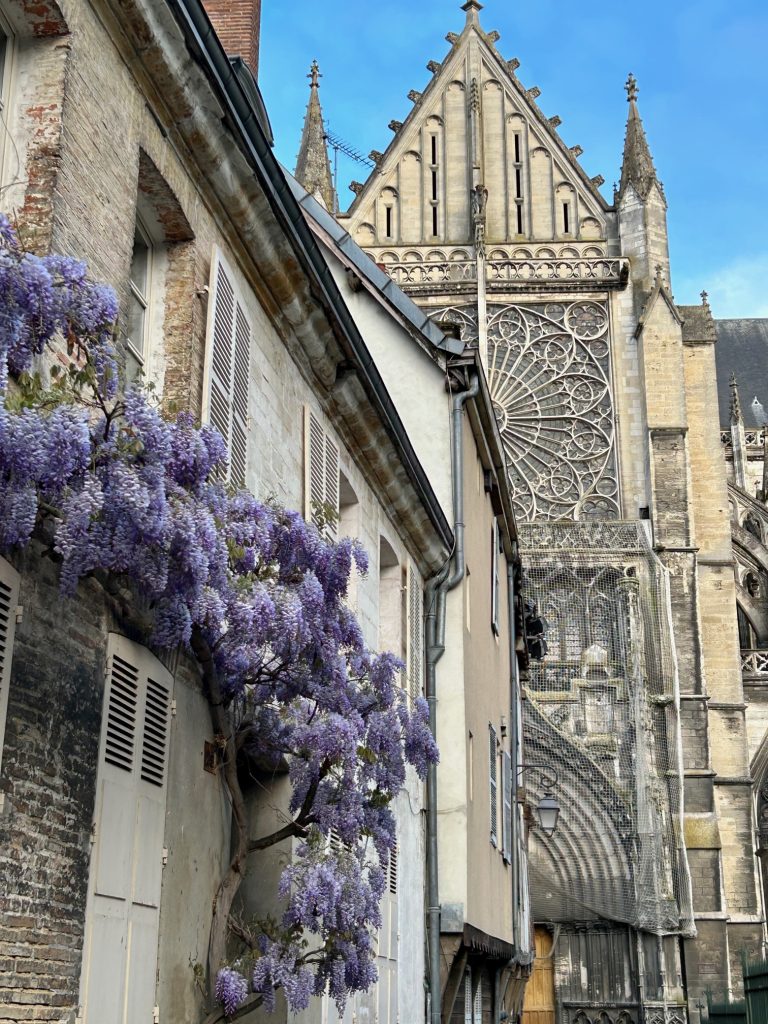
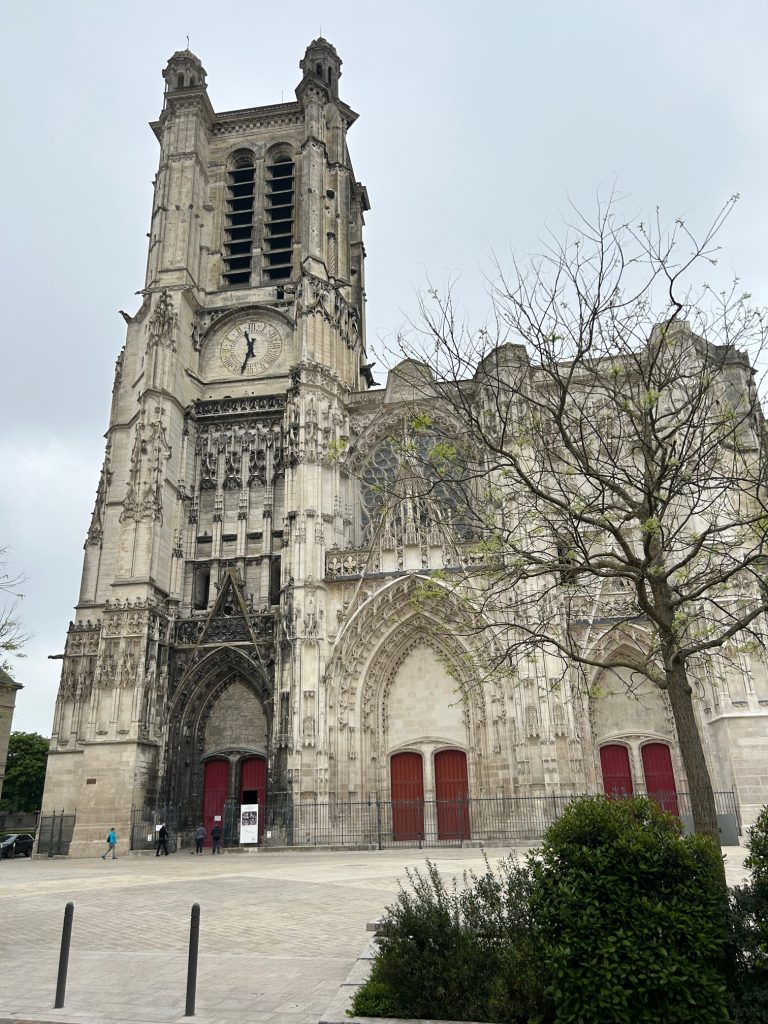

Cathedral of Saint Peter & Saint Paul…
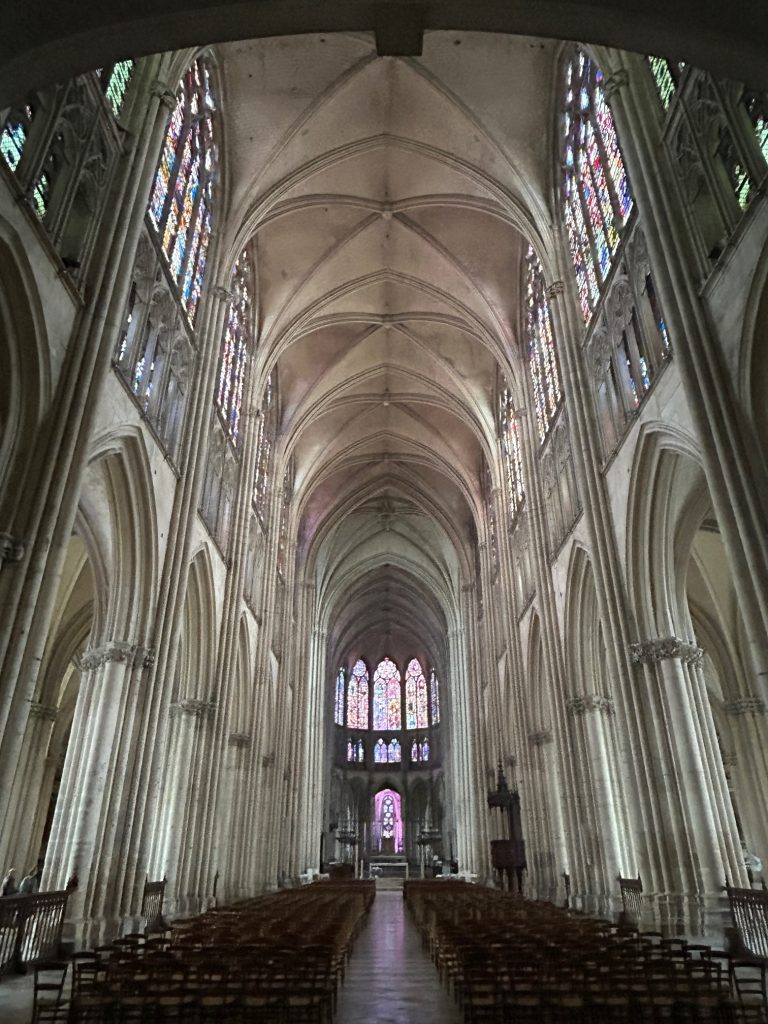
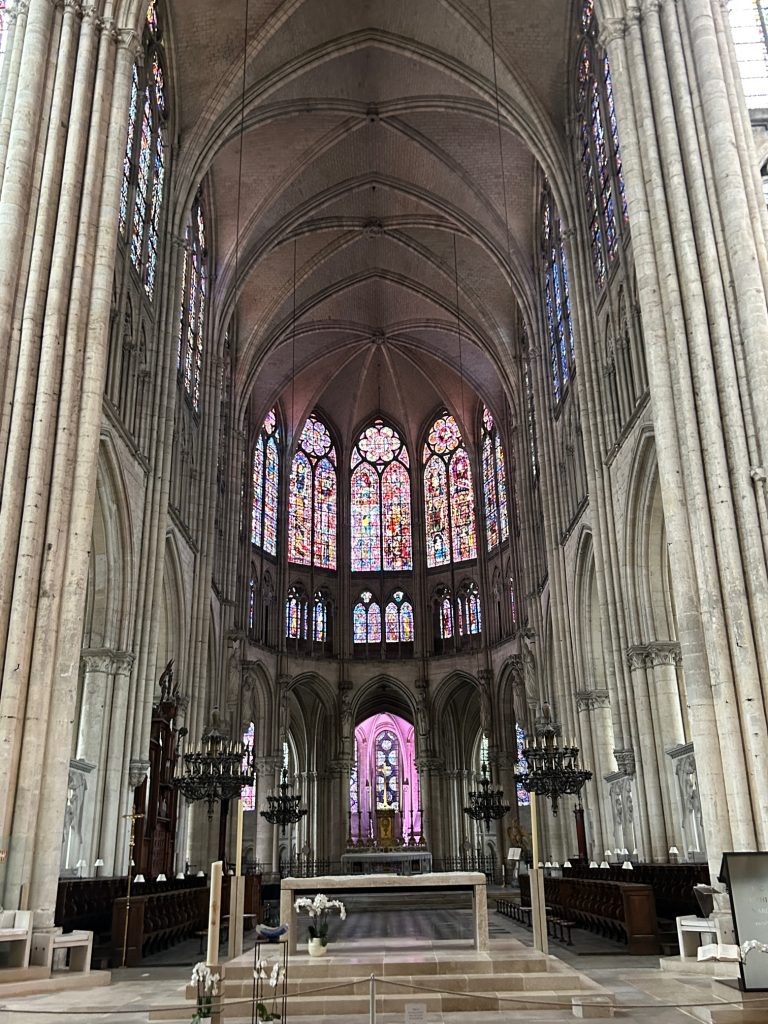
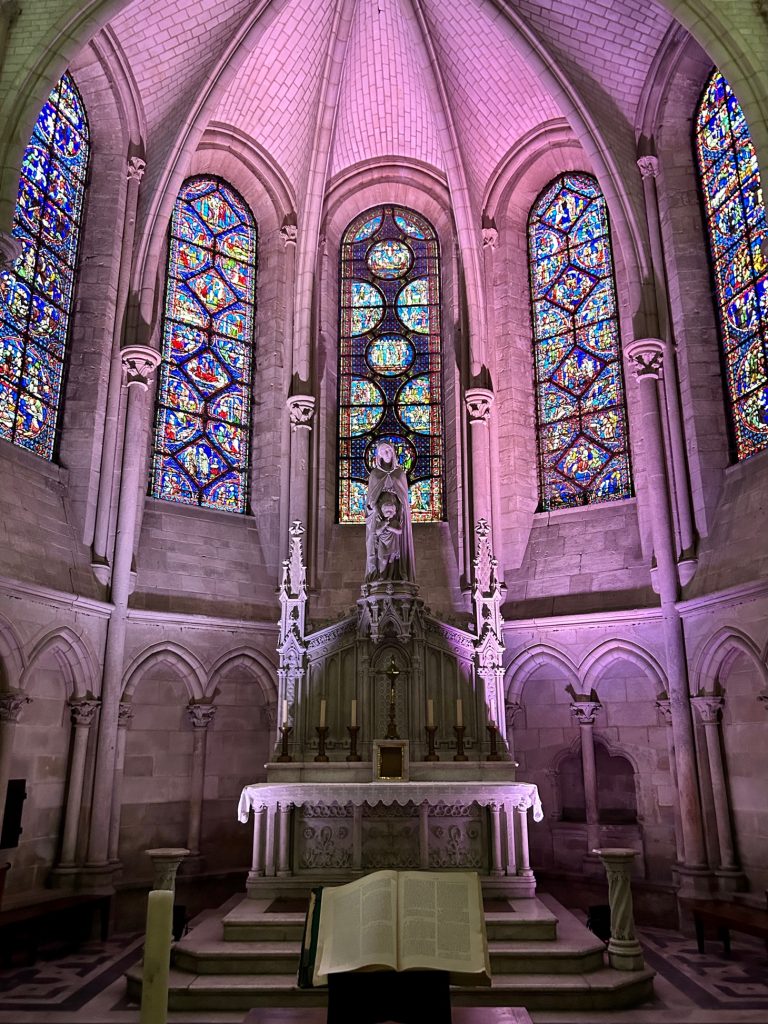
… with some of it’s 1,500 square metres of beautiful stained glass windows
The second of the principal churches, and without a doubt my favourite, is the 12th century Church of Sainte Madeleine. It too was built in the Gothic style but what sets this church apart is it’s intricately chiselled stone rood screen which was added early in the 16th century. This church also has the most exquisite stained glass windows which, for my part, are easier to see and understand than those in the Cathedral.
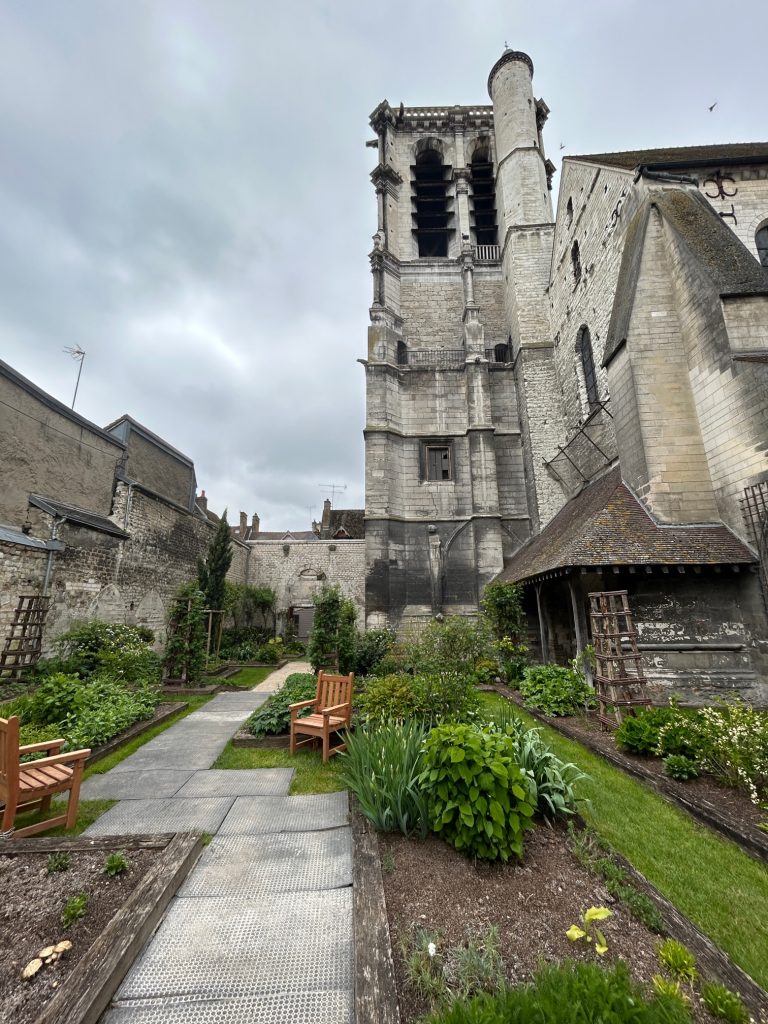

The Eglise de Sainte Madeleine (as seen from the Jardin des Innocents) and a detail of the stone rood screen inside the church…

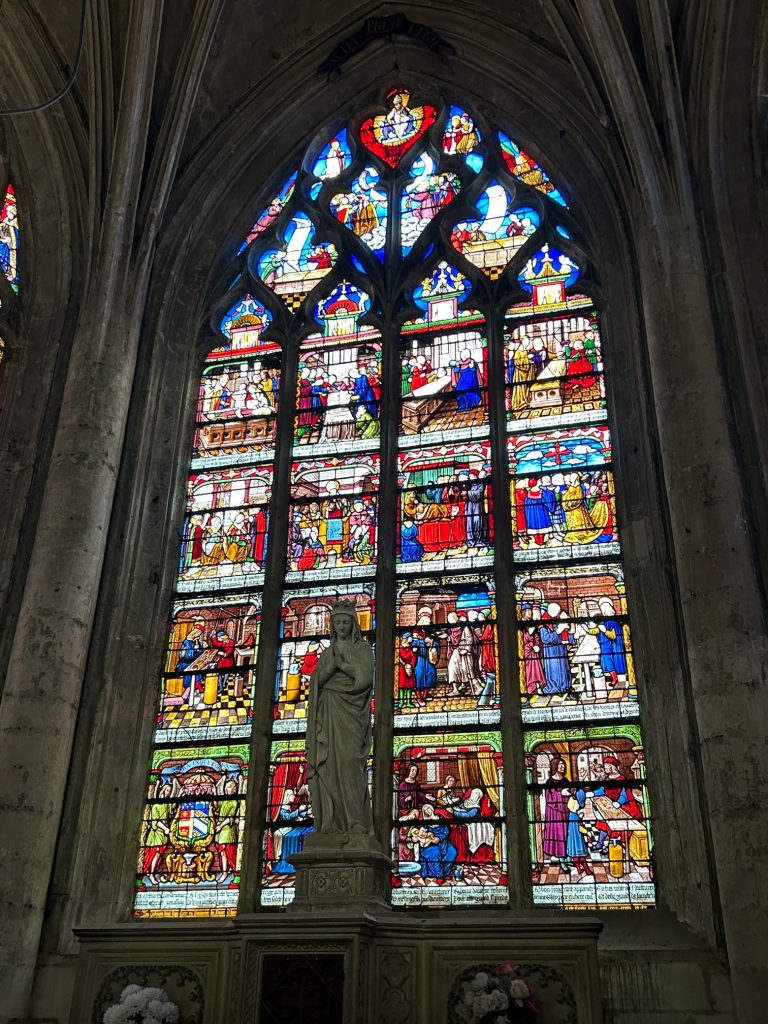
… and the most incredible stained glass windows from the Troyes School of Stained Glass – the colours are so vivid. The window on the left features scenes from the Book of Genesis.
At the risk of boring you, stained glass windows mounted in blocks such as those in the Eglise Sainte Madeleine are generally read from left to right and from bottom to top. So, bottom left in the first of the above photos (that’s the one featuring the Book of Genesis) the world is created. In the second image from the left, the elements of sky, earth and water are being added. In the third from the left, these elements are separated and in the fourth image on the far right, stars are formed. Moving up to the second row from the bottom, the image on the left reflects the fish and the birds being added to the world and then in the second from the left, the other animals in the world are introduced. Adam is added in the third image from the left and then, on the extreme right of the second row up from the bottom, Eve is added. And so it goes on. Third image from the left in the third row up from the bottom, Cain kills Abel… it’s like reading a comic but starting at the end. Enough about stained glass.
From the outside, the Baslique Saint Urbain de Troyes is the most impressive looking of the big three churches. It owes its existence to Jacques Pantaleon, the son of a local cobbler, who was elected Pope Urban IV in 1261 and he chose to celebrate the life of a predecessor, Urban I, by building the church in his honour.
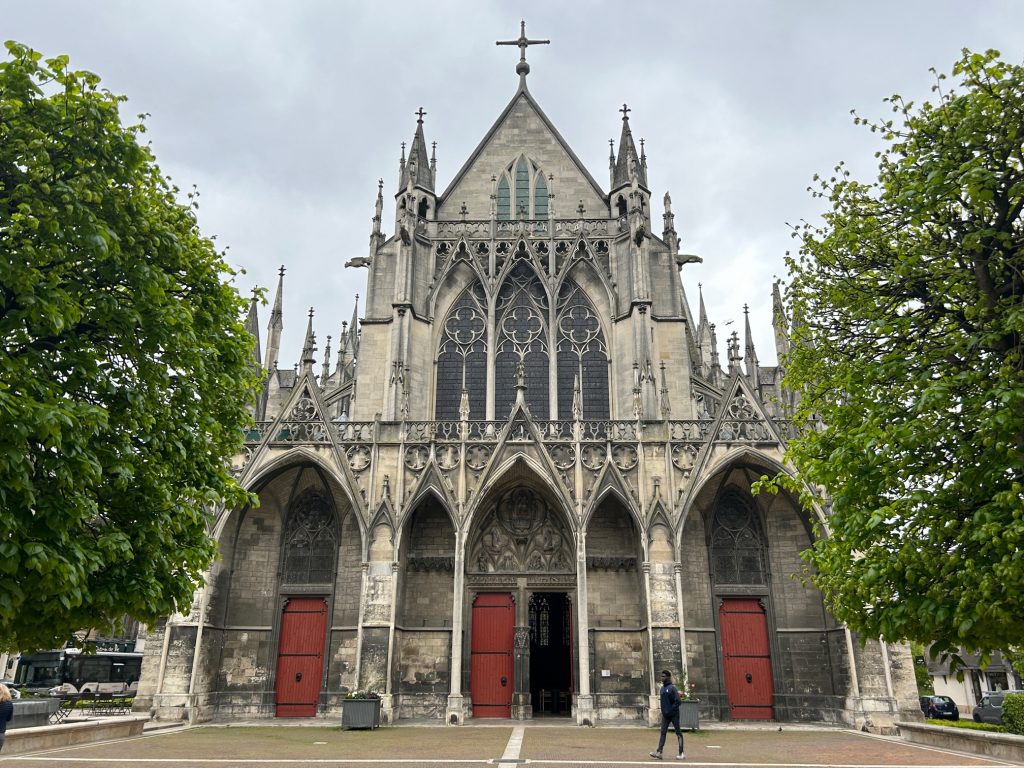
Saint Urbain, consecrated as a basilica in 1964, was built on the site of his father’s cobbler’s shop.
So what about the rest of the city? It has a great deal more to offer and for the most part it is all easily accessible. Most of the major tourist attractions, whether they be medieval buildings and churches, bars and restaurants or modern shopping opportunities, are tightly packed around the city centre.
We made directly for the centre of the city where, alongside the old canal (the Canal du Trevois which is fed by no less a river than the Seine), a modern stainless steel heart designed by local artists Michele and Thierry Kayo-Houel has been fixed. At night, this heart glows a deep red and the colour begins to pulse as movement sensors pick up on any approaching people. It is very clever and can make for some excellent photo opportunities, especially if the surrounding water jets are turned on.

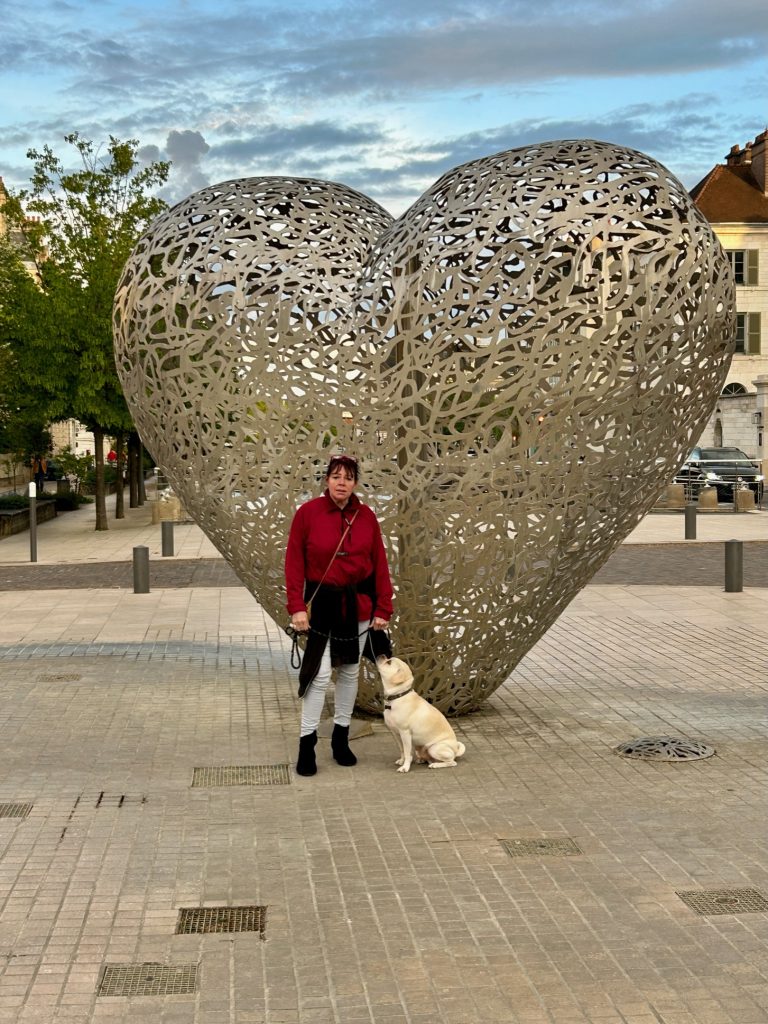

There are a number of other contemporary statues dotted along the canal and some these too make for ideal photo opportunities, one being a life size statue of “Lili, la dame au chapeau”. I’m surprised Vanya didn’t pose Beanie with Lili but it was the “attendez-moi”, a statue of a dog chasing geese which most interested her.
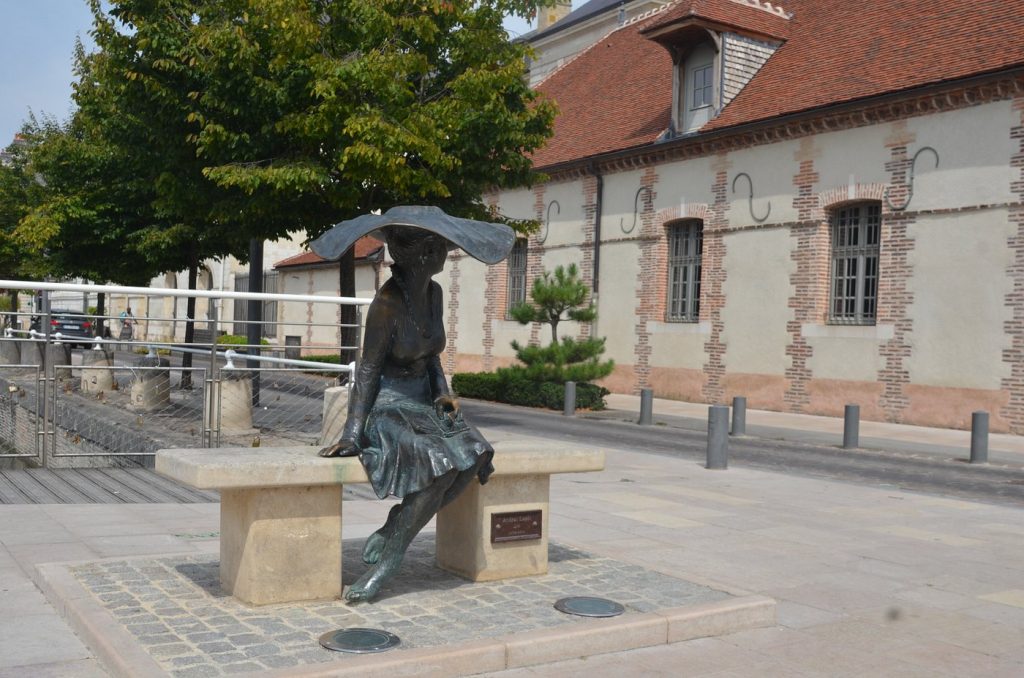
Lili, la dame au chapeau
Troyes is in the Champagne producing area. Indeed it is the historic capital of the old Champagne-Ardennes Region. It is also the capital of the Aube Department which, after the Marne Department, is the second largest producer of champagne. Having said that, we were surprised not to see a single vine during our drive down from Montreuil sur Mer to Troyes although; we did “see” a lot of champagne bars in the centre of Troyes.
I was intending to go on and write a little about some of the many interesting museum’s here and also about the city’s retail parks (there are three) but since we didn’t visit any of them and because I have been dabbling with this particular blog for over a week, I’m going to finish now. I’ll leave you with my final photo of the heart of the city.


